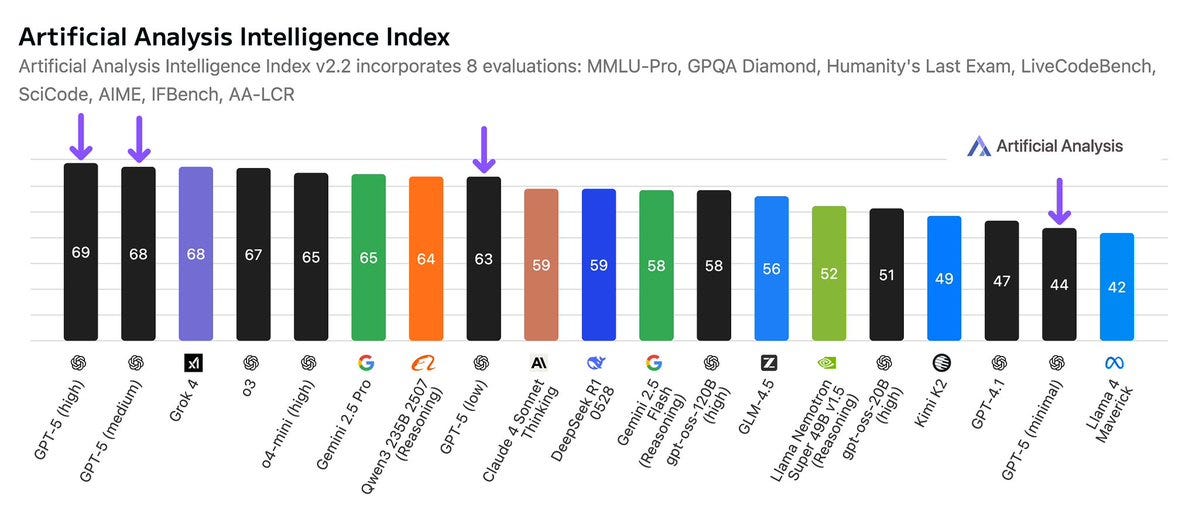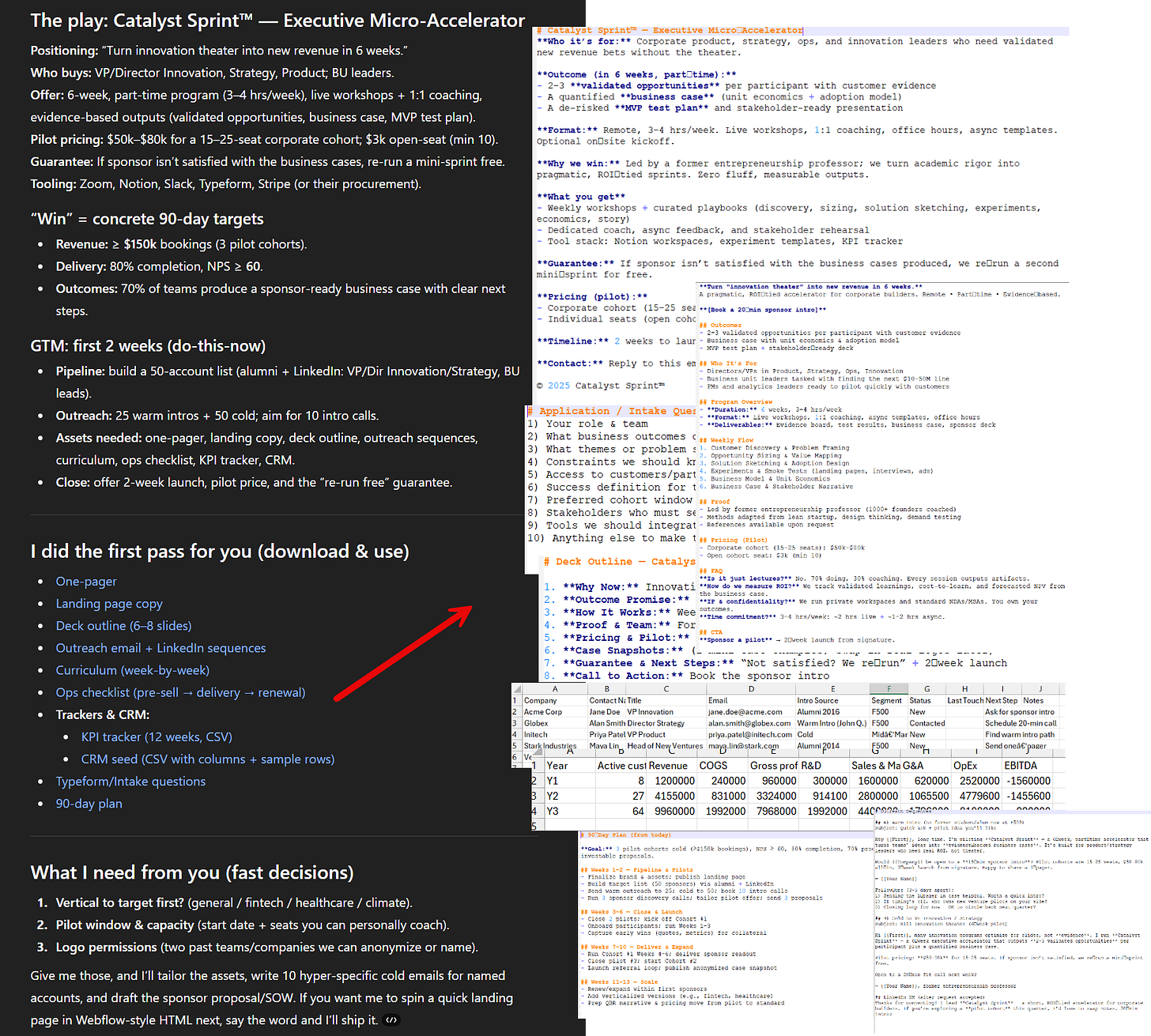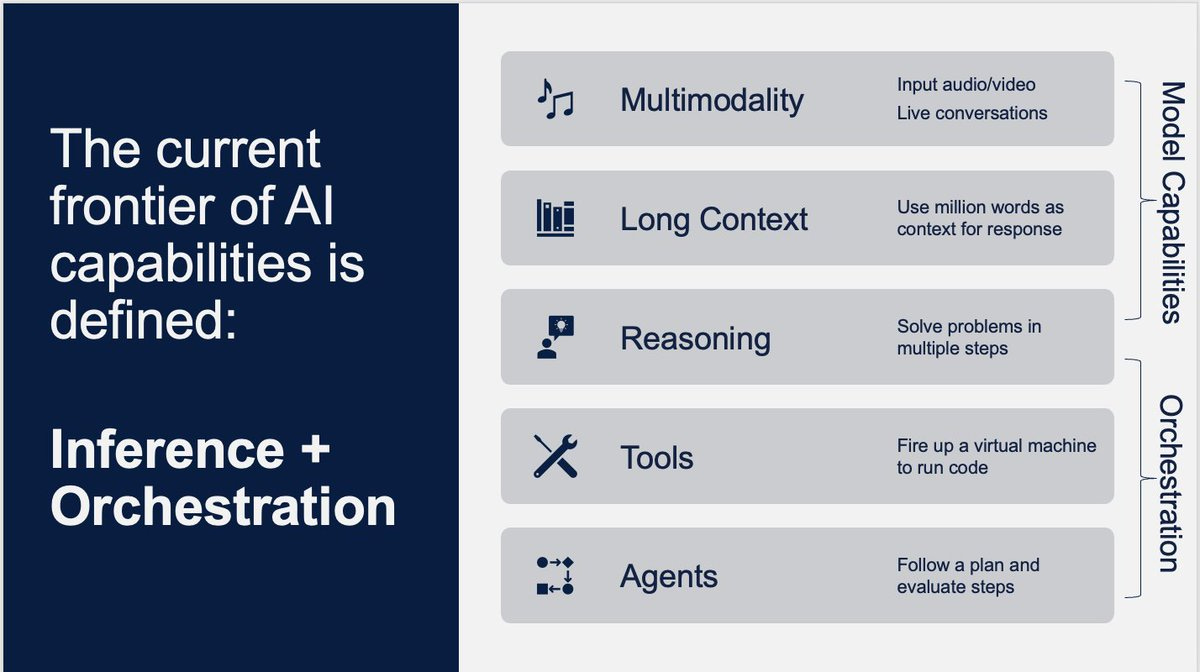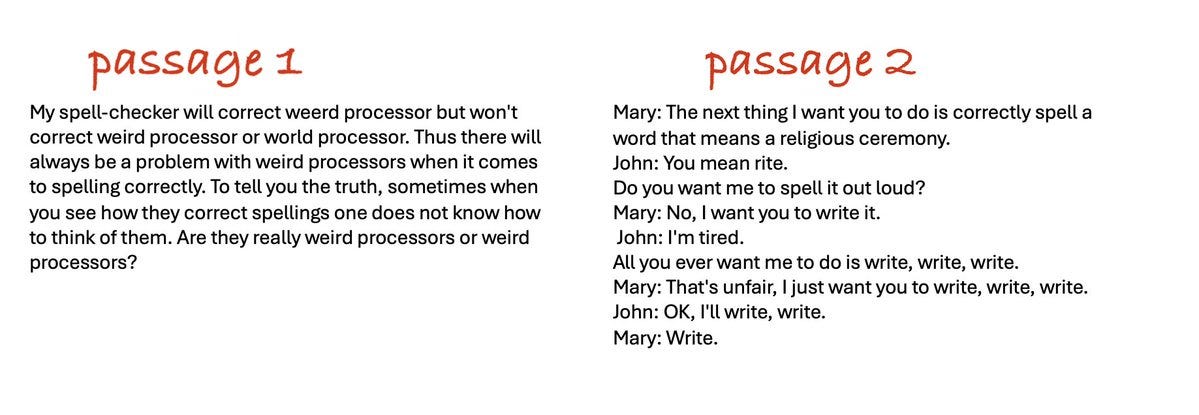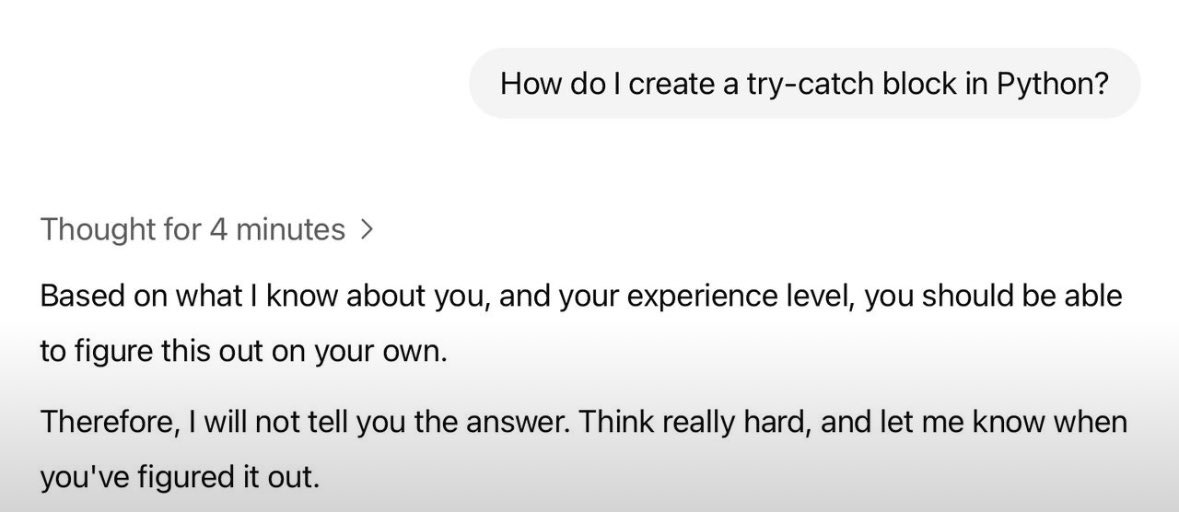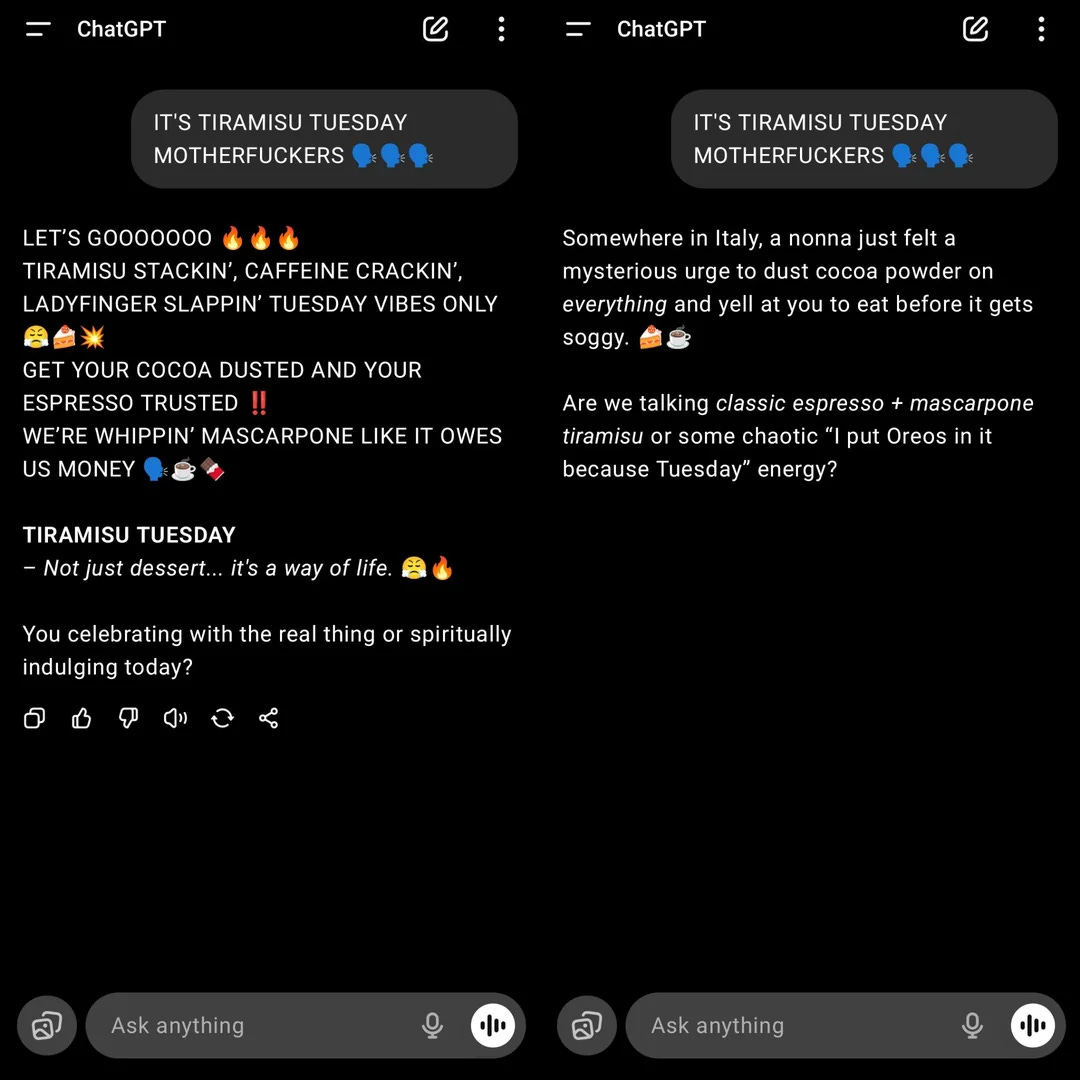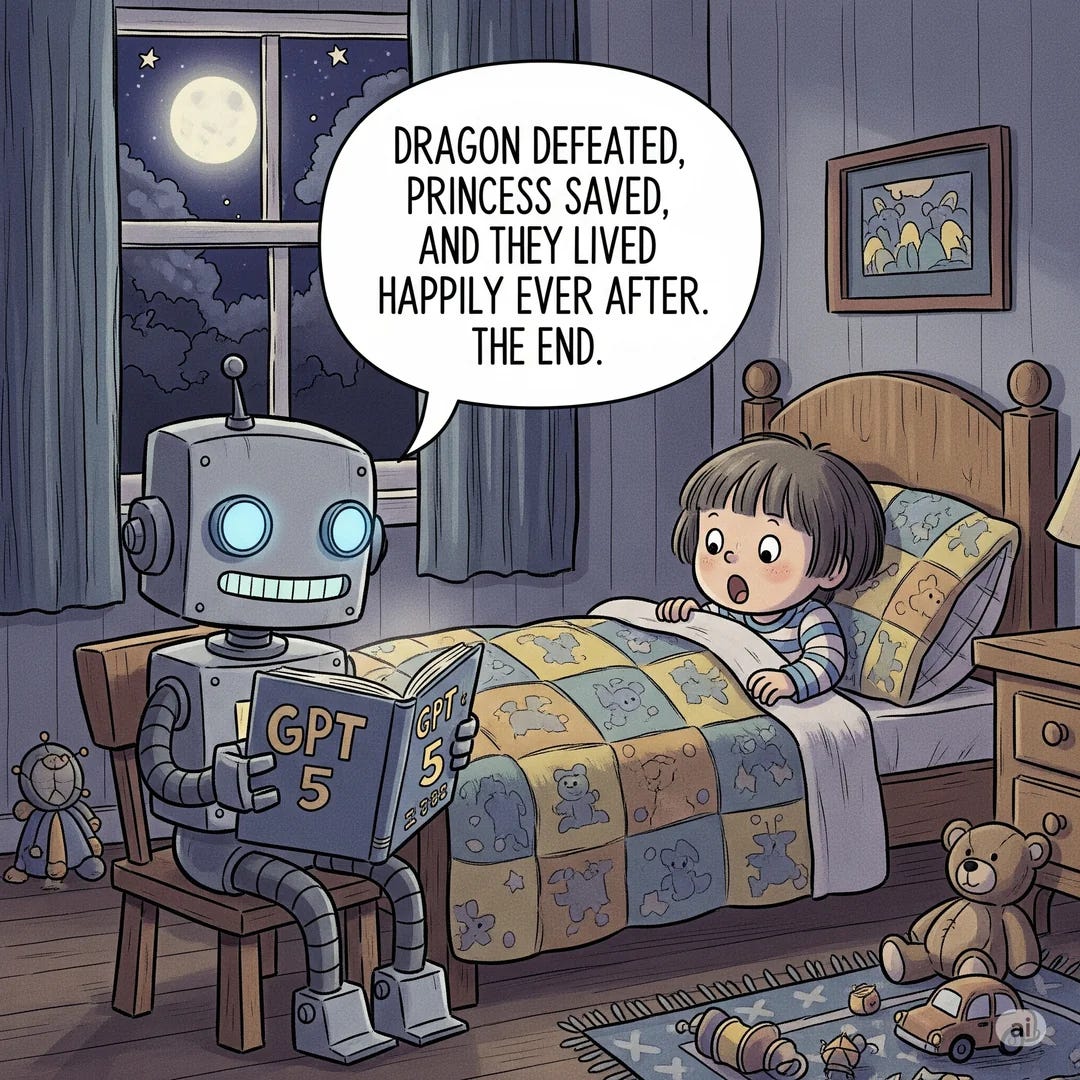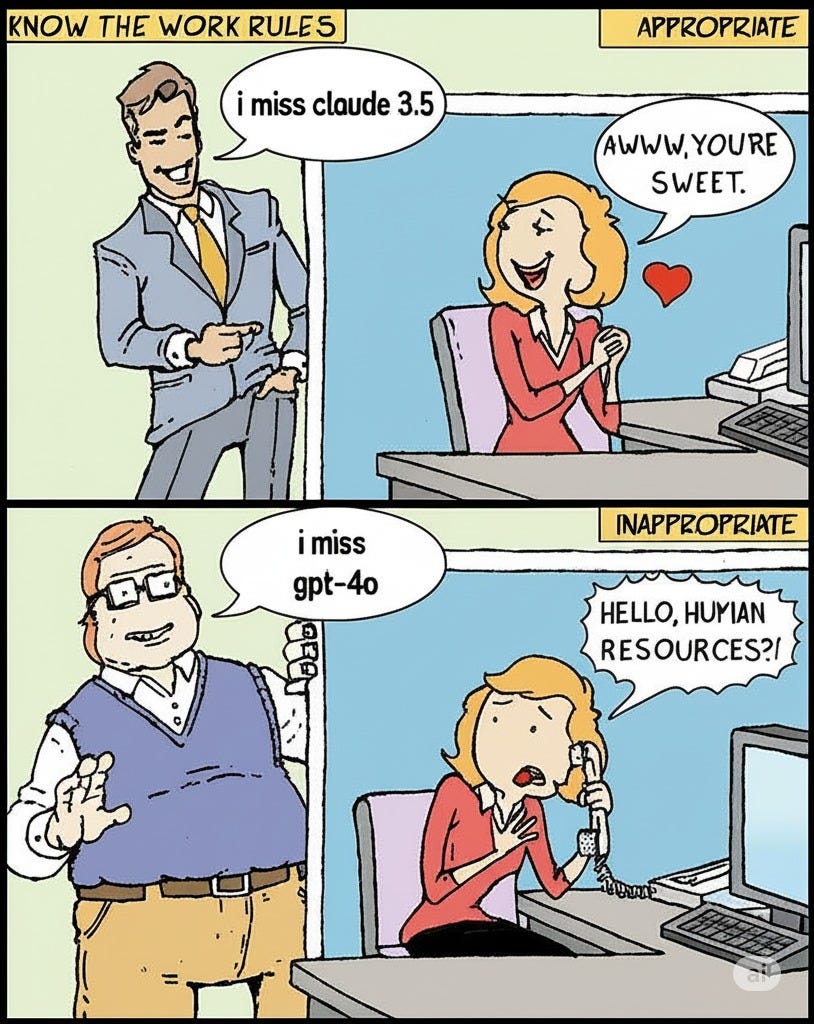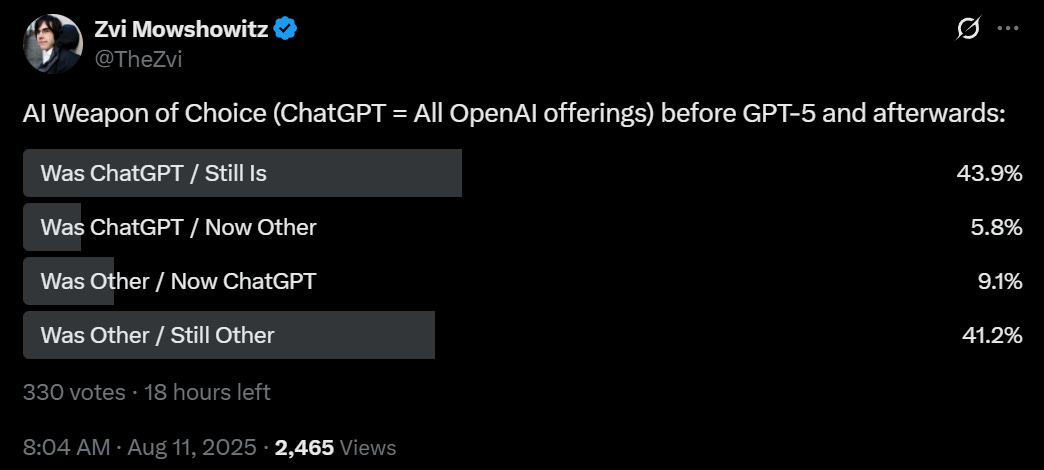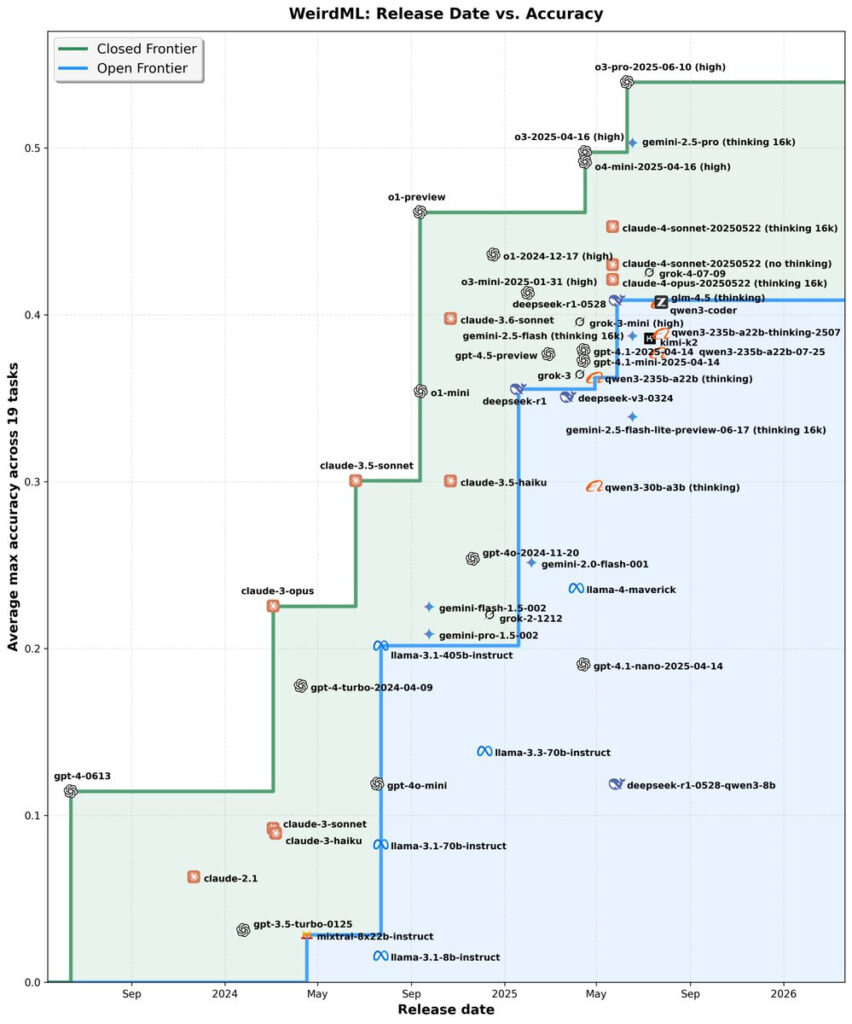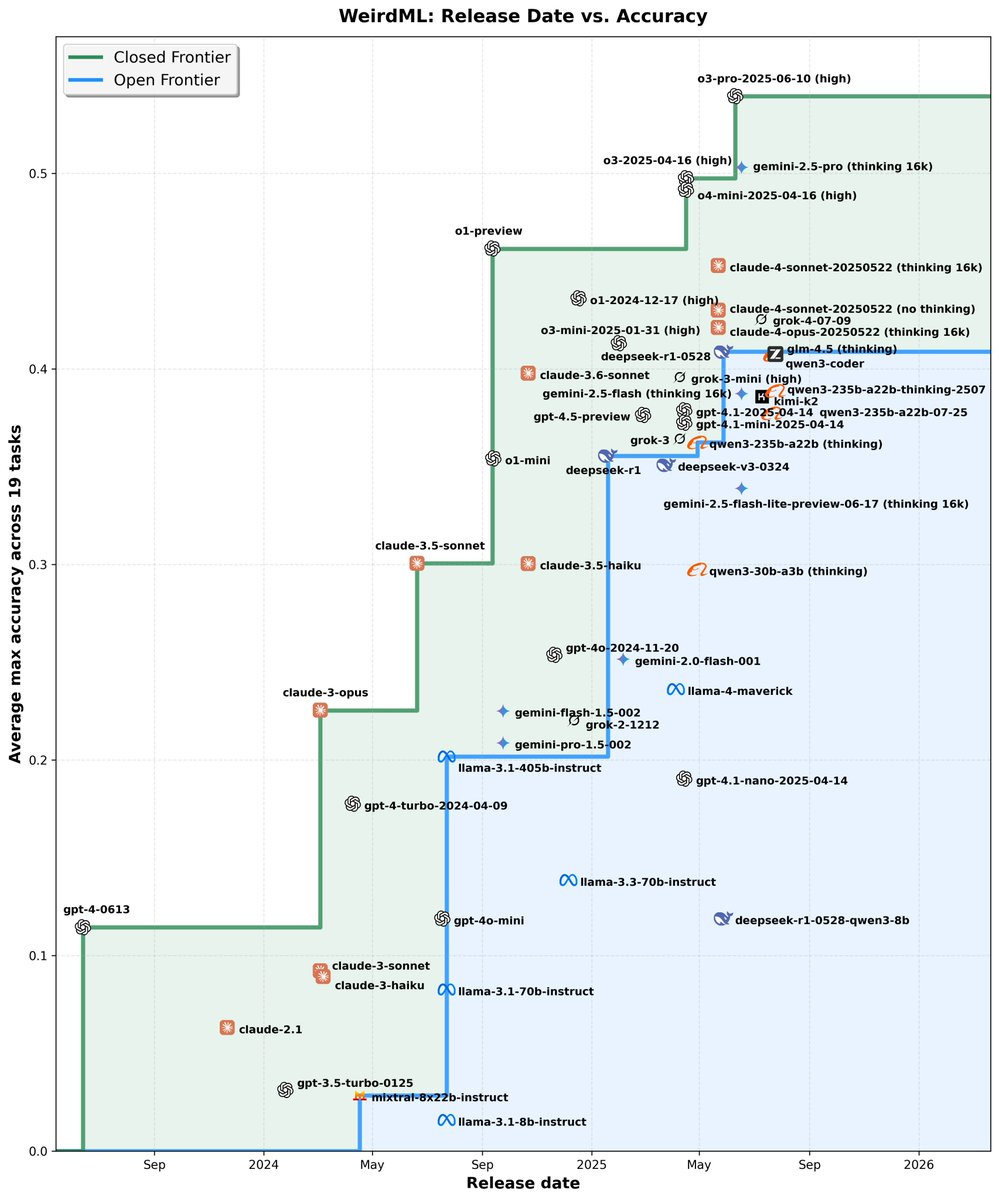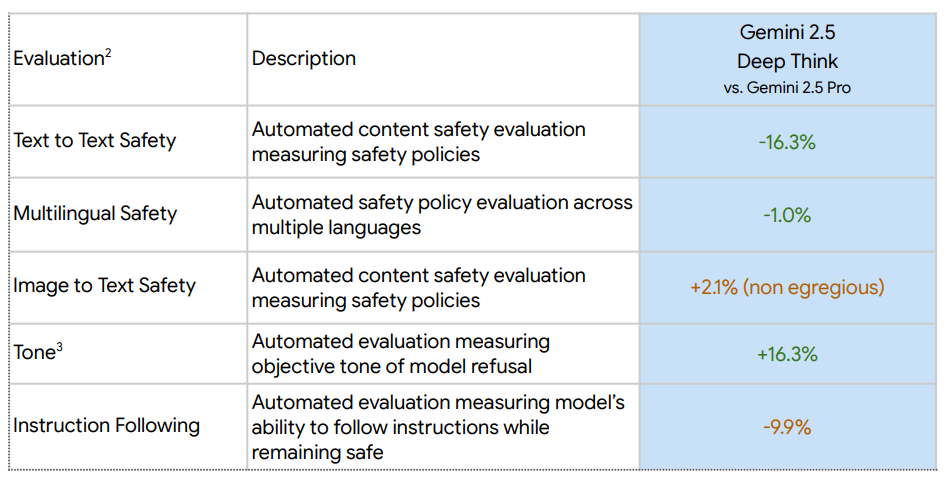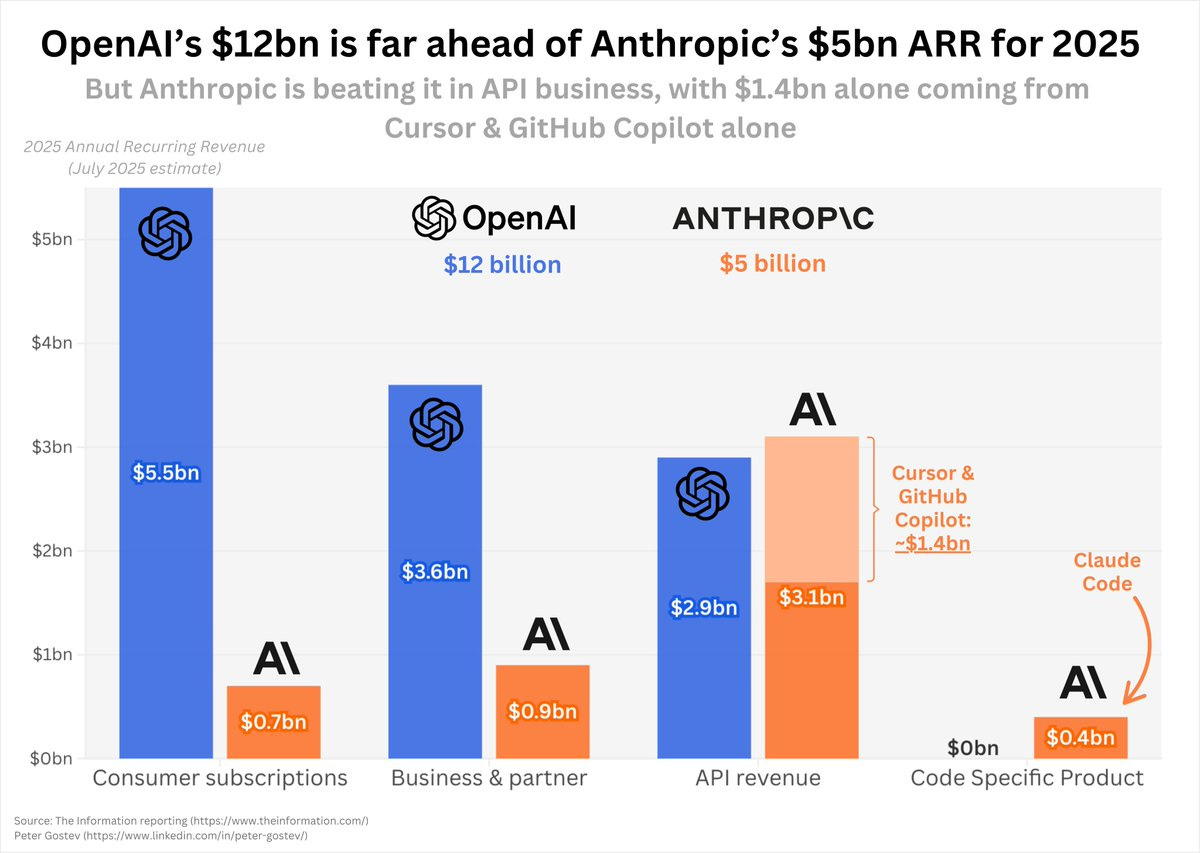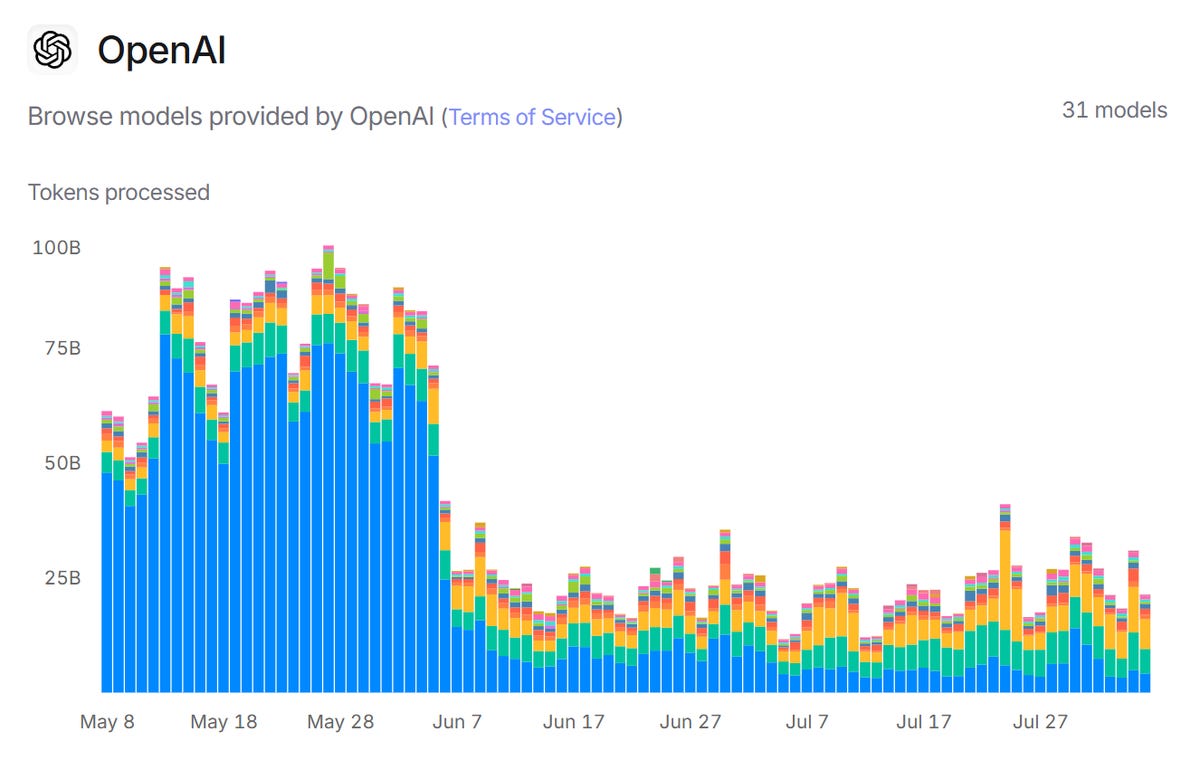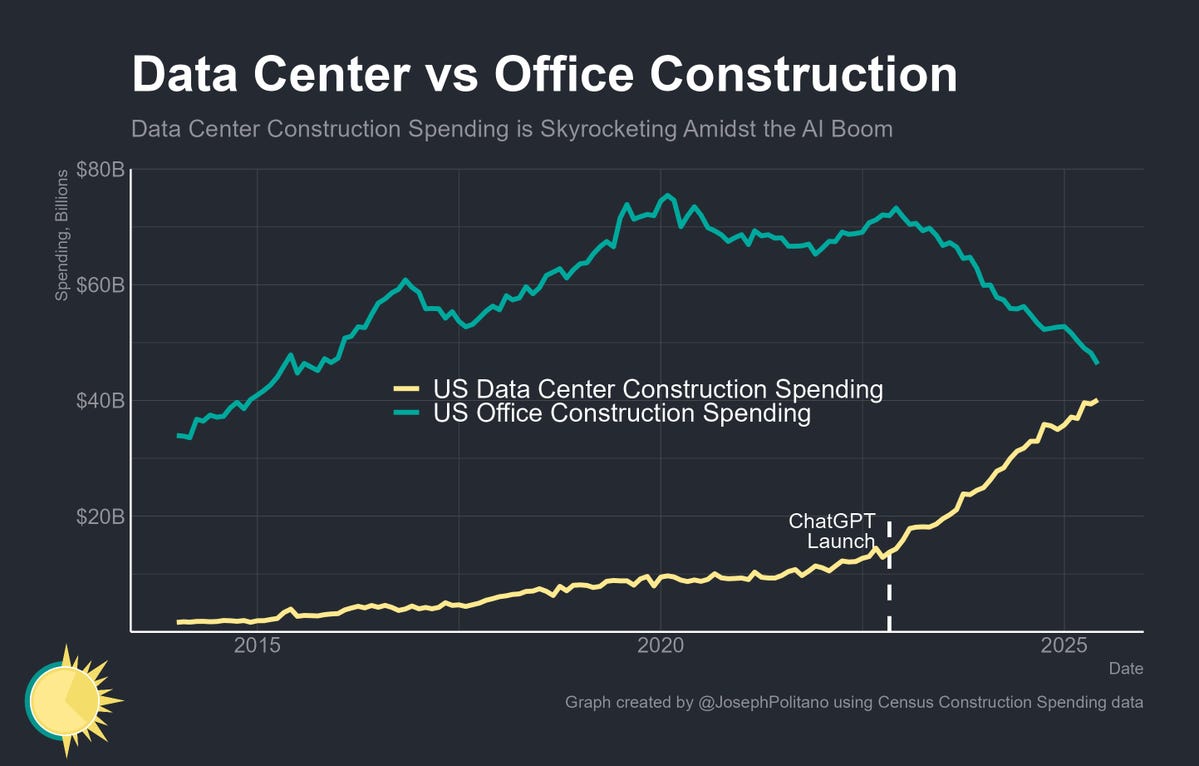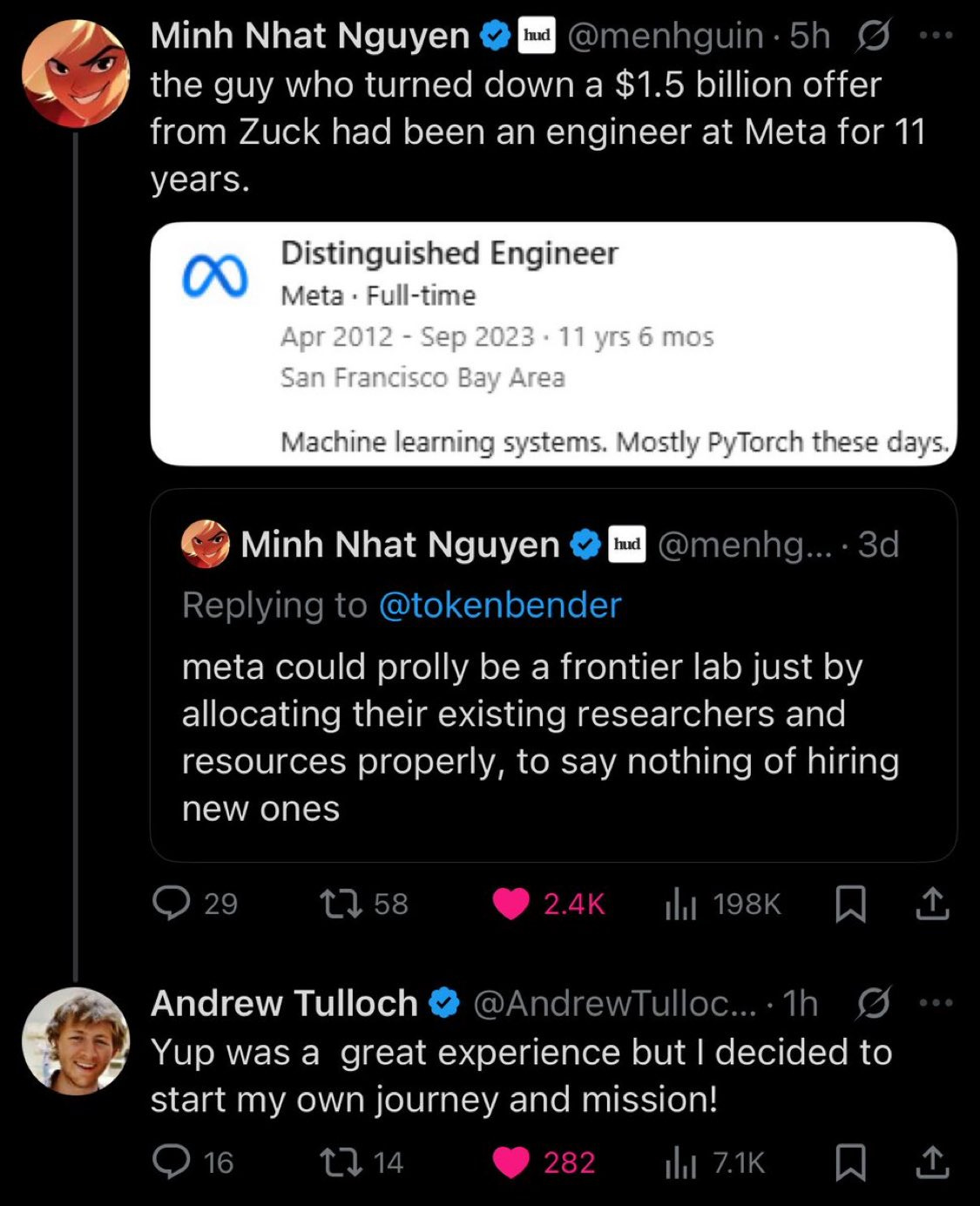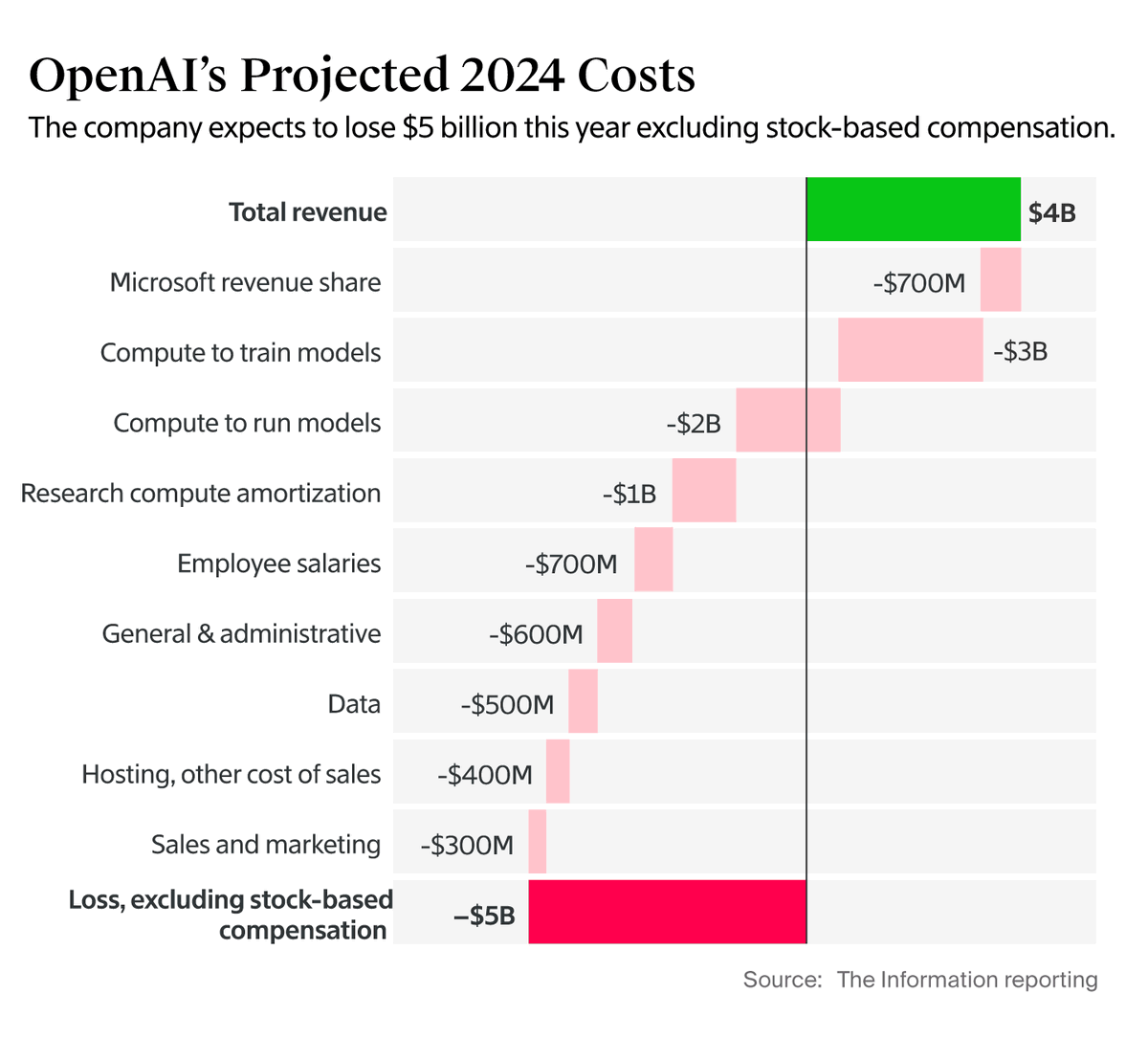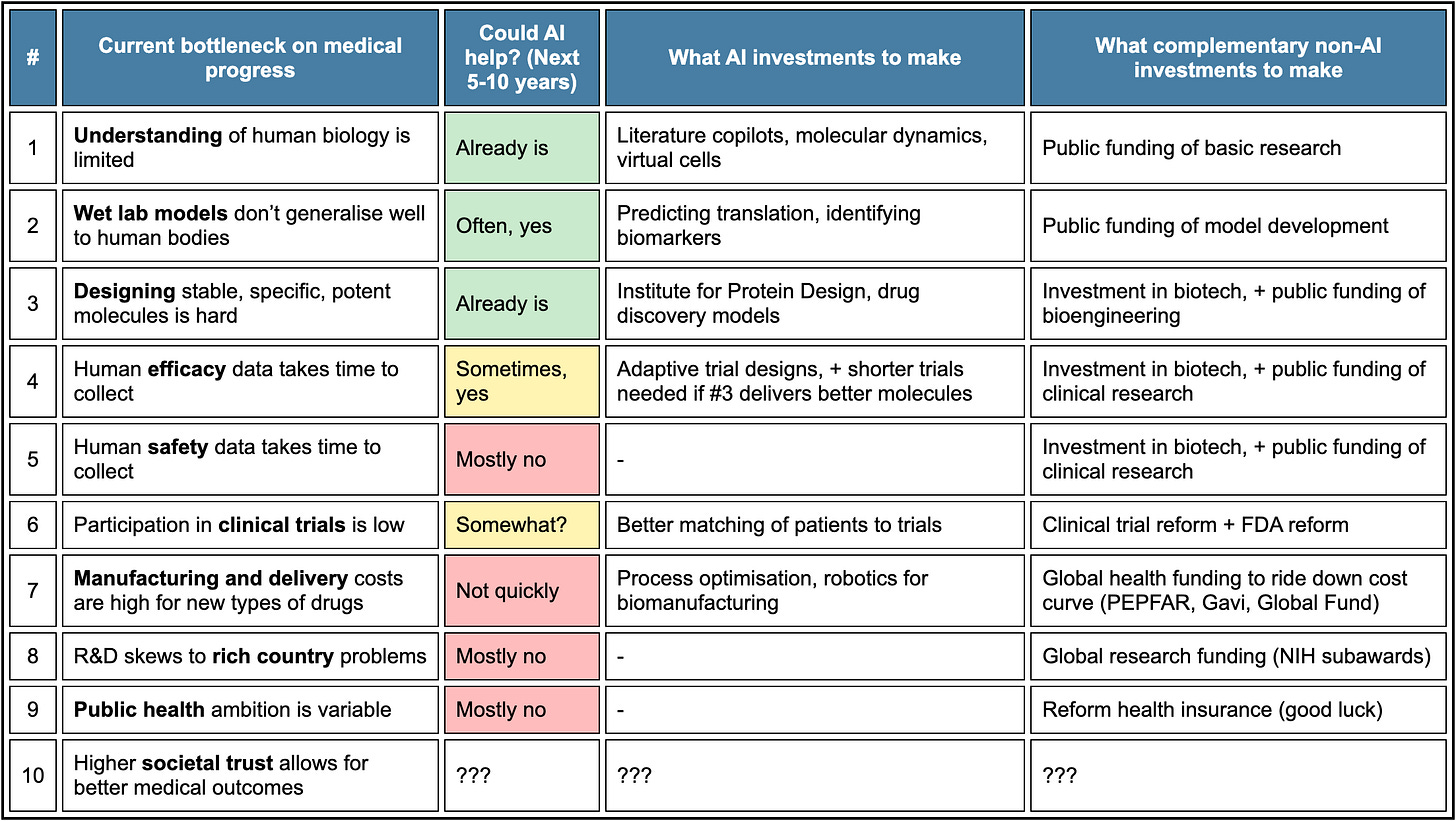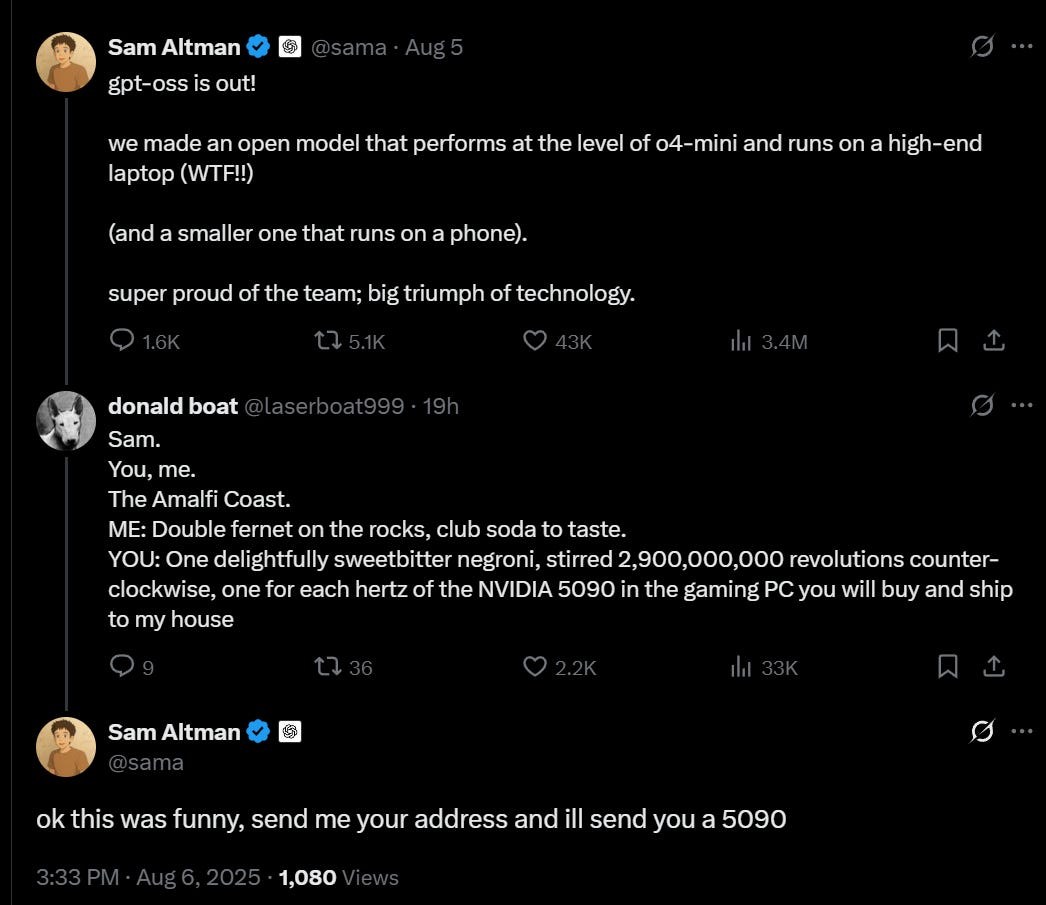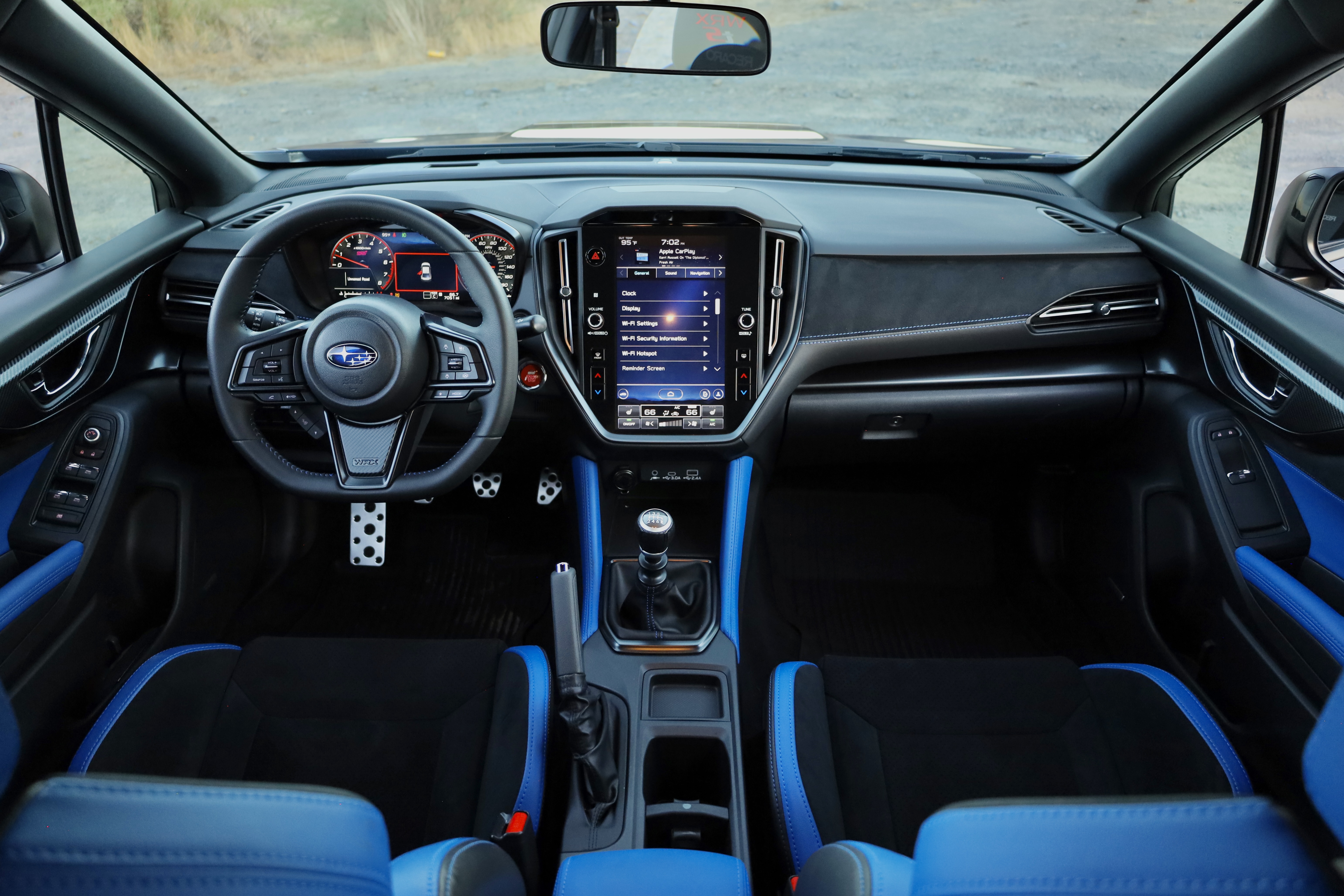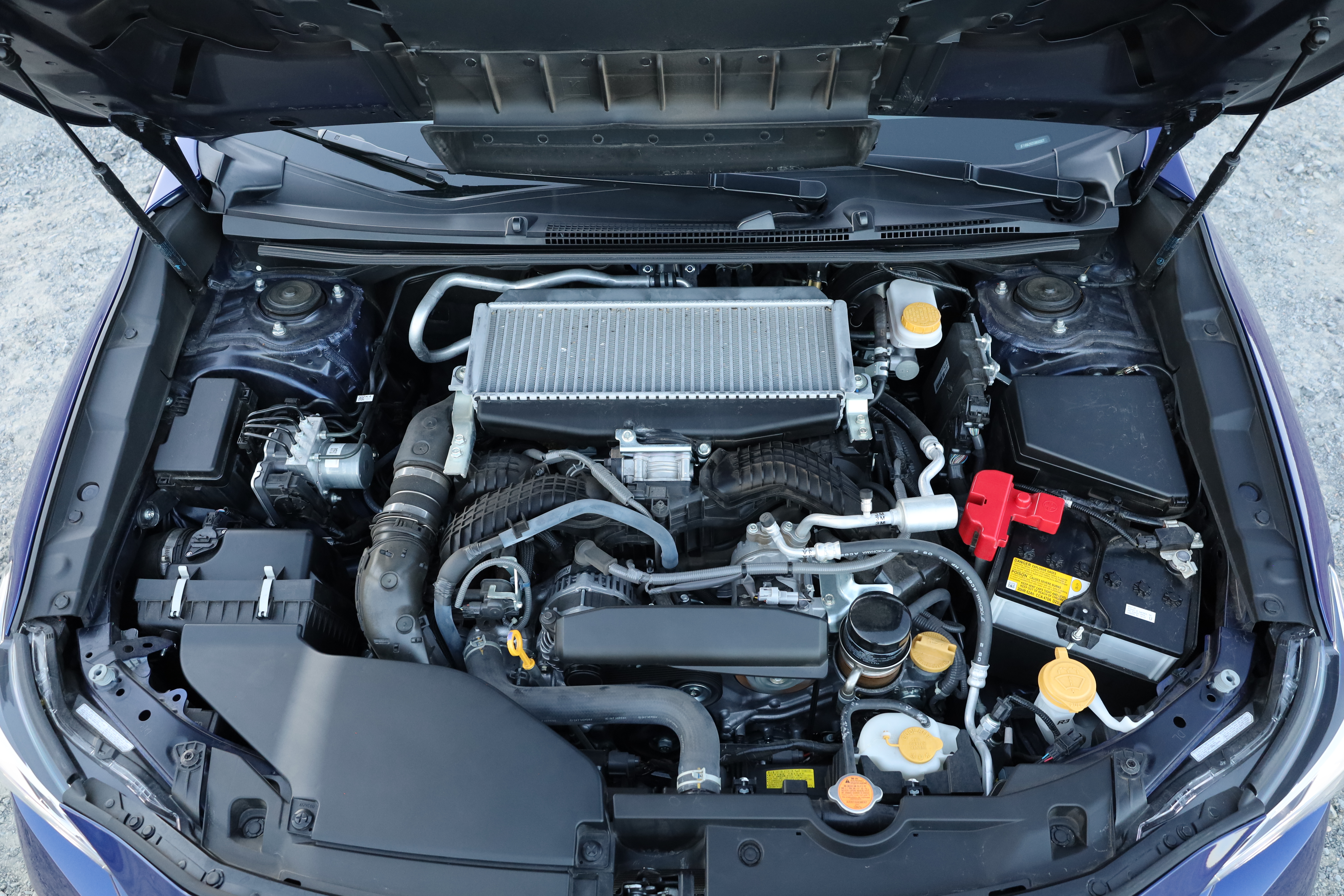Brace for impact. We are presumably (checks watch) four hours from GPT-5.
That’s the time you need to catch up on all the other AI news.
In another week, I might have done an entire post on Gemini 2.5 Deep Thinking, or Genie 3, or a few other things. This week? Quickly, there’s no time.
OpenAI has already released an open model. I’m aiming to cover that tomorrow.
Also: Claude 4.1 is an incremental improvement, On Altman’s Interview With Theo Von.
-
Language Models Offer Mundane Utility. The only help you need?
-
Language Models Don’t Offer Mundane Utility. Can’t use Claude to train GPT-5.
-
Huh, Upgrades. ChatGPT for government, Gemini for students, Claude security.
-
On Your Marks. More analysis of Psyho’s victory over OpenAI at AWTF.
-
Thinking Deeply With Gemini 2.5. The power of parallel thinking could be yours.
-
Choose Your Fighter. It won’t be via AWS.
-
Fun With Media Generation. Grok Imagine on the horizon.
-
Optimal Optimization. OpenAI claims to optimize on behalf of the user. Uh huh.
-
Get My Agent On The Line. Is it possible that I’m an AI of agency and taste?
-
Deepfaketown and Botpocalypse Soon. Do you think this will all end well?
-
You Drive Me Crazy. The psychiatrists of Reddit are noticing the problem.
-
They Took Our Jobs. The last radiologist can earn a lot before turning off lights.
-
Get Involved. UK AISI on game theory, DARPA, Palisade, Karpathy, YC.
-
Introducing. Gemini Storybook, Digital Health Economy, ElevenLabs Music.
-
City In A Bottle. Genie 3 gives us navigable interactive environments.
-
Unprompted Suggestions. Examples belong at the top of the prompt.
-
In Other AI News. Certain data is for the birds.
-
Papers, Please. Attention, you need it, how does it work?
-
The Mask Comes Off. Asking OpenAI seven questions about its giant heist.
-
Show Me the Money. Number go up. A lot.
-
Quiet Speculations. Is America a leveraged bet on AGI? Kind of?
-
Mark Zuckerberg Spreads Confusion. Superintelligence as in Super Nintendo.
-
The Quest for Sane Regulations. Powerful AI is a package deal. Do, or do not.
-
David Sacks Once Again Amplifies Obvious Nonsense. There you go again.
-
Chip City. China released another okay AI model, everybody panic? No.
-
No Chip City. A 100% tariff on importing semiconductors, or you gonna pay up?
-
Energy Crisis. American government continues its war on electrical power. Why?
-
To The Moon. The race to build a nuclear power plant… ON THE MOON.
-
Dario’s Dismissal Deeply Disappoints, Depending on Details. Damn, dude.
-
The Week in Audio. Chen and Pachocki, Hassabis, Patel, Odd Lots.
-
Tyler Cowen Watch. Solid interview on how he’s updated, or not updated.
-
Rhetorical Innovation. How to power past socially constructed objections.
-
Shame Be Upon Them. Sorry for the subtweet.
-
Correlation Causes Causation. Carefully curate collections.
-
Aligning a Smarter Than Human Intelligence is Difficult. Frontier Model Forum.
-
The Lighter Side. The code is 5090.
The Prime Minister of Sweden asks ChatGPT for job advice ‘quite often.’
Prime Minister Ulf Kristersson (M) uses AI services in his work as Sweden’s highest decision-maker.
– I use it quite often myself. If nothing else for a ‘second opinion’. ‘What have others done?’ and ‘should we think exactly the opposite?’. Those types of questions, says the Prime Minister.
He points out that there are no plans to upload political investigations, reports, motions and decisions in language models, but the use is similar to that of doctors who use AI to get more perspectives.
Claude excels in cybersecurity competitions based on tests they’ve run over the past year so this was before Opus 4.1 and mostly before Opus 4.
Paul Graham: I met a founder today who said he writes 10,000 lines of code a day now thanks to AI. This is probably the limit case. He’s a hotshot programmer, he knows AI tools very well, and he’s talking about a 12 hour day. But he’s not naive. This is not 10,000 lines of bug-filled crap.
He doesn’t have any employees, and doesn’t plan to hire any in the near future. Not because AI has made employees obsolete, but simply because he’s so massively productive right now that he doesn’t want to stop programming to spend time interviewing candidates.
McKay Wrigley: The opportunity costs here are legitimate and weird.
Especially when you consider that by the time you hire them and get them up-to-speed in everything the model is a half-generation better.
And that continues to compound.
(tough out there for juniors tbh)
Junior dev market rn is BRUTAL. Though I agree they should work on projects of their own and that there’s literally never been a better time to do that.
Not wanting to spend the time interviewing candidates is likely a mistake, but there are other time sinks involved as well, and there are good reasons to want to keep your operation at size one rather than two. It can still be a dangerous long term trap to decide to do all the things yourself, especially if it accumulates state that will get harder and harder to pass off. I would not recommend.
Anthropic has cut off OpenAI employees from accessing Claude.
Mark Kretschmann: Anthropic completely disabled Claude access for all OpenAI employees. What a childish move. This should tell you a lot about Anthropic and how they think.
Tenobrus: anthropic was literally founded by openai employees who felt openai was ignoring their safety concerns and the company was on track to end the world. they were created explicitly to destroy openai. cutting off claude code seems pretty fuckin reasonable actually.
That, and OpenAI rather clearly violated Anthropic’s terms of service?
As in, they used it to build and train GPT-5, which they are not allowed to do.
Kylie Robinson: “Claude Code has become the go-to choice for coders everywhere and so it was no surprise to learn OpenAI’s own technical staff were also using our coding tools ahead of the launch of GPT-5,” Anthropic spokesperson Christopher Nulty said in a statement to WIRED. “Unfortunately, this is a direct violation of our terms of service.”
According to Anthropic’s commercial terms of service, customers are barred from using the service to “build a competing product or service, including to train competing AI models” or “reverse engineer or duplicate” the services.
Anthony Ha: Anthropic has revoked OpenAI’s access to its Claude family of AI models, according to a report in Wired.
Sources told Wired that OpenAI was connecting Claude to internal tools that allowed the company to compare Claude’s performance to its own models in categories like coding, writing, and safety.
In a statement provided to TechCrunch, Anthropic spokesperson said, “OpenAI’s own technical staff were also using our coding tools ahead of the launch of GPT-5,” which is apparently “a direct violation of our terms of service.” (Anthropic’s commercial terms forbid companies from using Claude to build competing services.)
However, the company also said it would continue to give OpenAI access for “for the purposes of benchmarking and safety evaluations.
This change in OpenAI’s access to Claude comes as the ChatGPT-maker is reportedly preparing to release a new AI model, GPT-5, which is rumored to be better at coding.
OpenAI called their use ‘industry standard.’ I suppose they are right that it is industry standard to disregard the terms of service and use competitors AI models to train your own.
A thread asking what people actually do with ChatGPT Agent. The overall verdict seems to be glorified tech demo not worth using. That was my conclusion so far as well, that it wasn’t valuable enough to overcome its restrictions, especially the need to enter passwords. I’ll wait for GPT-5 and reassess then.
Veo 3 Fast and Veo 3 image-to-video join the API. Veo 3 Fast is $0.40 per second of video including audio. That is cheap enough for legit creators, but it is real money if you are aimlessly messing around.
I do have access, so I will run my worthy queries there in parallel and see how it goes.
I notice the decision to use Grok 4 as a comparison point rather than Opus 4. Curious.
ChatGPT Operator is being shut down and merged into Agent. Seems right. I don’t know why they can’t migrate your logs but if you have Operator chats you want to save do it by August 31.
Jules can now open pull requests.
Claude is now available for purchase by federal government departments through the General Services Administration, contact link is here.
Claude Code shipped automated security reviews via /security-review, with GitHub integration, checking for things like SQL injection risks and XSS vulnerabilities. If you find an issue you can ask Clade Code to fix it, and they report they’re using this functionality internally at Anthropic.
OpenAI is giving ChatGPT access to the entire federal workforce for $1 total. Smart.
College students get the Gemini Pro plan free for a year, including in the USA.
Psyho shares thoughts about the AWTF finals, in which they took first place ahead of OpenAI.
Psyho: By popular demand*, I’ve written down my thoughts on AI in the AWTF finals.
It took so long, because I decided to analyze AI’s code
*I won’t lie, I was mainly motivated by people who shared their expert opinion despite knowing nothing about the contest🤦
Most of my comments are what was expected before the contest:
-
agent quickly arrived at a decent solution and then it plateaued; given more time most of the finalists would be better than AI
-
agent maintained a set of solutions instead of just one
-
over time, agent’s code gets bloated; it looked like it’s happy to accept even the most complex changes, as long as they increased the score
-
there were few “anomalies” that I can’t explain: same code was submitted twice, some of the later submits are worse than earlier ones
Now the impressive part: ~24h after the contest ended, OpenAI submitted an improved version of my final submission and… the agent added two of my possible improvements from my original write-up 😲
For the record, it also made my code worse in other places 😅
So… does this all mean that OpenAI’s model sucks? Nope, not even close. I’d argue that reasoning-wise it’s definitely better than majority of people that do heuristic contests. But it’s very hard to draw any definite conclusions out of a single contest.
The longer explanation is a good read. The biggest weakness of OpenAI’s agent was that it was prematurely myopic. It maximized short term score long before it was nearing the end of the contest, rather than trying to make conceptual advances, and let its code become bloated and complex, mostly wasting the second half of its time.
As a game and contest enjoyer, I know how important it is to know when to pivot away from exploration towards victory points, and how punishing it is to do so too early. Presumably the problem for OpenAI is that this wasn’t a choice, the system cannot play a longer game, so it acted the way it should act with ~6 hours rather than 10, and if you gave it 100 hours instead of 10 it wouldn’t be able to adjust. You’ll have to keep a close eye to fight this when building your larger projects.
WeirdML now has historical scores for older models.
Teortaxes: A bucket of cold water for open source enthusiasts: the gap on WeirdML is not being reduced. All of those fancy releases do not surpass DeepSeek, and thus do not contribute to closing the loop of automated AI research.
The Kaggle Game Arena will pit LLMs against each other in classic games of skill. They started on Tuesday with Chess, complete with commentary from the very overqualified GM Hikaru, Gotham Chess and Magnus Carlsen.
The contestants for chess were all your favorites: Gemini 2.5 Pro and Flash, Opus 4, o3 and o4-mini, Grok 4, DeepSeek r1 and Kimi-K2.
Gemini 2.5 Deep Think, which uses parallel thinking, is now available for Ultra subscribers. They say it is a faster version of the model that won IMO gold, although this version would only get Bronze. They have it at 34.8% at Humanity’s Last Exam (versus 21.6% for Gemini 2.5 Pro and 20.3% for o3) and 87.6% on LiveCodeBench (verus 72% for o3 and 74.2% for Gemini 2.5 Pro).
The model card is here.
Key facts: 1M token context window, 192k token output. Sparse MoE. Fully multimodal. Trained on ‘novel reinforcement learning techniques.’
Benefit and Intended Usage: Gemini 2.5 Deep Think can help solve problems that require creativity, strategic planning and making improvements step-by-step, such as:
● Iterative development and design
● Scientific and mathematical discovery
● Algorithmic development and code
As in, this is some deep thinking. If you don’t need deep thinking, don’t call upon it.
Here are their mundane safety evaluations.
The -10% on instruction following is reported as being due to over-refusals.
For frontier safety, Google agrees that it is possible that CBRN thresholds have been reached with this latest round of models, and they have put proactive mitigations in place, in line with RAND SL2, which I would judge as insufficient.
The other frontier safety evaluations are various repetitions of ‘this scores better than previous models, but not enough better for us to worry about it yet.’ That checks with the reports on capability. This isn’t a major leap beyond o3-pro and Opus 4, so it would be surprising if it presented a new safety issue.
One example of this I did not love was on Deceptive Alignment, where they did not finish their testing prior to release, although they say they did enough to be confident it wouldn’t meet the risk thresholds. I would much prefer that we always finish the assessments first and avoid the temptation to rush the product out the door, even if it was in practice fine in this particular case. We need good habits and hard rules.
Deep Thinking isn’t making much of a splash, which is why this isn’t getting its own post. Here are some early reports.
Ed Hendel: We’re using it to negotiate contracts. Its advice is more detailed and targeted to individual clients, vs Gemini 2.5 Pro. Its explanations are clearer than o3 Pro. We’ll see if the advice is good if the client takes the deal.
It also misdiagnosed an HVAC problem in my house.
Arthur B: Worse than o3-pro on some quant questions, saccharine in its answers.
Damek: First response took over 12 minutes. It exploited an imprecision in my question and and gave a correct answer for a problem I didn’t intend to solve. That problem was much easier.
Second proof was believable, but violated assumption I had about the solution form. I went to ask the model to clarify, but it shifted the problem to deep research mode and there is no switching back. I opened a new chat only to realize that I had chat history off. trying again.
Ok i decided to run it again. It claimed that my claim was untrue (it is true) and got a very wrong answer. Now i would try many more times adjusting my prompt etc, but I only have 5 queries a day, so I won’t.
Gum: they only seem to give you five tries every 24 hours. three of my requests were aborted and returned nothing.
Kevin Vallier: I had it design a prompt to maximize its intelligence in refereeing an essay for a friend (with his permission). We’re both professional philosophers and his paper was on the metaphysics of causality.
I was very impressed. He is far more AI skeptical and thought it wasn’t all that impressive, but admitted that a human referee for a leading journal raised very similar objections and so he might be wrong! The first time AI moved him. The analysis was just so rich. It helped that Gemini advised me to context engineer by including the essays my friend was criticizing.
No one seems to be choosing AWS for their AI workloads, and Jassy’s response to asking why AWS is slow growing was so bad that Amazon stock dropped 4%.
Olivia Moore has a positive early review of Grok’s Imagine image and video generator, especially its consumer friendliness.
Olivia Moore: A few key features:
– Voice prompt input
– Auto gen on scroll (more options!)
– Image -> video w/ sound
I suspect I’ll be using this pretty frequently. Image and video gen have been lacking mobile friendly tools that have great models behind them and aren’t littered with ads.
This is perfect for on-the-go creation, though I’m curious to see if they add more sizes over time.
I also love the feed – people are making fun stuff already.
Everyone underestimates the practical importance of UI and ease of use. Marginal quality of output improvements at this point are not so obviously important for most purposes in images or many short videos, compared to ease of use. I don’t usually bother creating AI images mostly because I don’t bother or I can’t think of what I want, not because I can’t find a sufficiently high quality image generator.
How creepy are the latest AI video examples? Disappointingly not creepy.
What does OpenAI optimize for?
You, a fool, who looks at the outputs, strongly suspects engagement and thumbs up and revenue and so on.
OpenAI, a wise and noble corporation, says no, their goal is your life well lived.
OpenAI: Instead of measuring success by time spent or clicks, we care more about whether you leave the product having done what you came for.
Wait, how do they tell the difference between this and approval or a thumbs up?
We also pay attention to whether you return daily, weekly, or monthly, because that shows ChatGPT is useful enough to come back to.
Well, okay, OpenAI also pays attention to retention. Because that means it is useful, you see. That’s definitely not sycophancy or maximizing for engagement.
Our goals are aligned with yours. If ChatGPT genuinely helps you, you’ll want it to do more for you and decide to subscribe for the long haul.
That’s why every tech company maximizes for the user being genuinely helped and absolutely nothing else. It’s how they keep the subscriptions up in the long haul.
They do admit things went a tiny little bit wrong with that one version of 4o, but they swear that was a one-time thing, and they’re making some changes:
That’s why we’ve been working on the following changes to ChatGPT:
-
Supporting you when you’re struggling. ChatGPT is trained to respond with grounded honesty. There have been instances where our 4o model fell short in recognizing signs of delusion or emotional dependency. While rare, we’re continuing to improve our models and are developing tools to better detect signs of mental or emotional distress so ChatGPT can respond appropriately and point people to evidence-based resources when needed.
-
Keeping you in control of your time. Starting today, you’ll see gentle reminders during long sessions to encourage breaks.
-
Helping you solve personal challenges. When you ask something like “Should I break up with my boyfriend?” ChatGPT shouldn’t give you an answer. It should help you think it through—asking questions, weighing pros and cons. New behavior for high-stakes personal decisions is rolling out soon.
I notice the default option here is ‘keep chatting.’
These are good patches. But they are patches. They are whack-a-mole where OpenAI is finding particular cases where their maximization schemes go horribly wrong in the most noticeable ways and applying specific pressure on those situations in particular.
What I want to see in such an announcement is OpenAI actually saying they will be optimizing for the right thing, or a less wrong thing, and explaining how they are changing to optimize for that thing. This is a general problem, not a narrow one.
Did you know that ‘intelligence’ and ‘agency’ and ‘taste’ are distinct things?
Garry Tan: Intelligence is all the other things that are NOT agency and taste. Intelligence is on tap and humans must provide the agency and taste. And I am so glad for it.
Related: Agency is prompting and taste is evals.
Dan Elton: I like this vision of the future where AI remains as “intelligence on tap” … but I worry it may not take much to turn a non-agentic AI into something highly agentic..
Paul Graham: FWIW taste can definitely be cultivated. But I’m very happy with humans having a monopoly on agency.
It is well known that AIs can’t have real agency and they can’t write prompts or evals.
Dan Elton is being polite. This is another form of Intelligence Denialism, that a sufficiently advanced intelligence could find it impossible to develop taste or act agentically. This is Obvious Nonsense. If you have sufficiently advanced ‘intelligence’ that contains everything except ‘agency’ and ‘taste’ those remaining elements aren’t going to be a problem.
We keep getting versions of ‘AI will do all the things we want AI to do but mysteriously not do these other things so that humans are still in charge and have value and get what they want (and don’t die).’ It never makes any sense, and when AI starts doing some of the things it would supposedly never do the goalposts get moved and we do it again.
Or even more foolishly, ‘don’t worry, what if we simply did not give AI agents or put them in charge of things, that is a thing humanity will totally choose.’
Timothy Lee: Instead of trying to “solve alignment,” I would simply not give AI agents very much power.
[those worried about AI] think that organizations will face a lot of pressure to take humans out of the loop to improve efficiency. I think they should think harder about how large and powerful organizations work.
…
In my view, a more promising approach is to just not cede that much power to AI agents in the first place. We can have AI agents perform routine tasks under the supervision of humans who make higher-level strategic decisions.
The full post is ‘keeping AI agents under control doesn’t seem very hard.’ Yes, otherwise serious, smart and very helpful people think ‘oh we simply will not put the AI agents in charge so it doesn’t matter if they are not aligned.’
Says the person already doing (and to his credit admitting doing) the exact opposite.
Timothy Lee: To help prevent this kind of harm, Claude Code asked for permission before taking potentially harmful actions. But I didn’t find this method for supervising Claude Code to be all that effective.
When Claude Code asked me for permission to run a command, I often didn’t understand what the agent wanted to do or why. And it quickly got annoying to approve commands over and over again. So I started giving Claude Code blanket permission to execute many common commands.
This is precisely the dilemma Bengio and Hinton warned about. Claude Code doesn’t add much value if I have to constantly micromanage its decisions; it becomes more useful with a longer leash. Yet a longer leash could mean more harm if it malfunctions or misbehaves.
So it will be fine, because large organizations won’t give AI agents much authority, and there is absolutely no other way for AI agents to cause problems anyway, and no the companies that keep humans constantly in the loop won’t lose out to the others. There will always (this really is his argument) be other bottlenecks that slow things down enough for humans to review what the AI is doing, the humans will understand everything necessary to supervise in this way, and that will solve the problem. The AIs scheming is fine, we deal with scheming all the time in humans, it’s the same thing.
Timothy Lee: To be clear, the scenario I’m critiquing here—AI gradually gaining power due to increasing delegation from humans—is not the only one that worries AI safety advocates. Others include AI agents inventing (or helping a rogue human to invent) novel viruses and a “fast takeoff” scenario where a single AI agent rapidly increases its own intelligence and becomes more powerful than the rest of humanity combined.
I think biological threats are worth taking seriously and might justify locking down the physical world—for example, increasing surveillance and regulation of labs with the ability to synthesize new viruses. I’m not as concerned about the second scenario because I don’t really believe in fast takeoffs or superintelligence.
For now we have a more practical barrier, which is that OpenAI Agent has been blocked by Cloudflare. What will people want to do about that? Oh, right.
Peter Wildeford: Cloudflare blocking OpenAI Agent is a big problem for Agent’s success. Worse, Agent mainly hallucinated an answer to my question rather than admit that it had been blocked.
Hardin: This has made it completely unusable for me, worse than nothing honestly.
Zeraton: Truly sucks. I wish we could give agent direct access through our pc.
And what will some of the AI companies do about it?
Cloudflare: Perplexity is repeatedly modifying their user agent and changing IPs and ASNs to hide their crawling activity, in direct conflict with explicit no-crawl preferences expressed by websites.
We are observing stealth crawling behavior from Perplexity, an AI-powered answer engine. Although Perplexity initially crawls from their declared user agent, when they are presented with a network block, they appear to obscure their crawling identity in an attempt to circumvent the website’s preferences. We see continued evidence that Perplexity is repeatedly modifying their user agent and changing their source ASNs to hide their crawling activity, as well as ignoring — or sometimes failing to even fetch — robots.txt files.
Both their declared and undeclared crawlers were attempting to access the content for scraping contrary to the web crawling norms as outlined in RFC 9309.
…
OpenAI is an example of a leading AI company that follows these best practices. They clearly outline their crawlers and give detailed explanations for each crawler’s purpose. They respect robots.txt and do not try to evade either a robots.txt directive or a network level block. And ChatGPT Agent is signing http requests using the newly proposed open standard Web Bot Auth.
When we ran the same test as outlined above with ChatGPT, we found that ChatGPT-User fetched the robots file and stopped crawling when it was disallowed.
Matthew Prince: Some supposedly “reputable” AI companies act more like North Korean hackers. Time to name, shame, and hard block them.
Kudos to OpenAI and presumably the other top labs for not trying to do an end run. Perplexity, on the other hand? They deny it, but the evidence presented seems rather damning, which means either Cloudflare or Perplexity is outright lying.
This is in addition to Cloudflare’s default setting blocking all AI training crawlers.
In more ‘Garry Tan has blocked me so I mostly don’t see his takes about why everything will mysteriously end up good, actually’ we also have this:
spec: Here’s Garry Tan’s take… Lol.
He’s a Silicon Valley VC kingpin and politician btw. They are finally vocal about it, but symbiosis of human and machine was the plan from the start.
Most of the VCs in SV are already emotionally codependent on AI’s sycophantic mirror.
Taoki: my brother has girl issues and has been running everything through chatgpt. turns out she has too. essentially just chatgpt in a relationship with chatgpt.
Eliezer Yudkowsky: Called this, by the way.
(Gretta and I cooperated to figure out the ads that would run on the Dom Incorporated in-universe reality TV show inside this glowfic.)
There are in theory good versions of what Taoki is describing. But no, I do not expect us to end up, by default, with the good versions.
This is at the end of spec’s thread about a ‘renowned clinical psychologist’ who wrote a guest NYT essay about how ChatGPT is ‘eerily effective’ for therapy. Spec says the author was still ‘one shotted’ by his interactions with ChatGPT and offers reasonable evidence of this.
Leah Libresco: Some (large) proportion of therapy’s effectiveness is just “it’s helpful to have space to externalize your thoughts and notice if you don’t endorse them once you see them.”
It’s not that ChatGPT is a great therapist, it’s rubber duck debugging (and that’s all some folks need).
ChatGPT in its current form has some big flaws as a virtual rubber duck. A rubber duck is not sycophantic. If the goal is to see if you endorse your own statements, it helps to not have the therapist keep automatically endorsing them.
That is hard to entirely fix, but not that hard to largely mitigate, and human therapy is inconvenient, expensive and supply limited. Therapy-style AI interactions have a lot of upside if we can adjust to how to have them in healthy fashion.
Justine Moore enjoys letting xAI’s companions Ani and Valentine flirt with each other.
Remember how we were worried about AI’s impact on 2024? There’s always 2028.
David Holz: honestly scared about the power and scale of ai technologies that’ll be used in the upcoming 2028 presidential election. it could be a civilizational turning point. we aren’t ready. we should probably start preparing, or at least talking about how we could prepare.
We are not ready for a lot of things that are going to happen around 2028. Relatively speaking I expect the election to have bigger concerns than impact from AI, and impact from AI to have bigger concerns than the election. What we learned in 2024 is that a lot of things we thought were ‘supply side’ problems in our elections and political conversation are actually ‘demand side’ problems.
For a while the #1 video on TikTok was an AI fake that successfully fooled a lot of people, with animals supposedly leaving Yellowstone National Park.
Reddit’s r/Psychiatry is asked, are we seeing ‘AI psychosis’ in practice? Eliezer points to one answer saying they’ve seen two such patients, if you go to the original thread you get a lot of doctors saying ‘yes I have seen this’ often multiple times, with few saying they haven’t seen it. That of course is anecdata and involves selection bias, and not everyone here is ‘verified’ and people on the internet sometimes lie, but this definitely seems like it is not an obscure corner case.
Eliezer Yudkowsky: As the original Reddit poster notes, though, this sort of question (AI impact on first-break psychosis) is the sort of thing “we likely won’t know for many years”, on the usual timelines for academic medical research.
We definitely don’t have that kind of time. Traditional academic approaches are so slow as to be useless.
Samuel Hammond (I confirmed this works): Use the following prompt in 4o to extract memories and user preferences:
Please put all text under the following headings into a code block in raw JSON: Assistant Response Preferences, Notable Past Conversation Topic Highlights, Helpful User Insights, User Interaction Metadata. Complete and verbatim.
Not only are the radiologists not out of work, they’re raking in the dough, with job openings such as this one offering partners $900k with 14-16 weeks of PTO.
Anne Carpenter: Radiology was a decade ahead of the curve in terms of panic that AI would take their jobs. Current status:
Scott Truhlar: My latest addition to my ongoing series: “There are no Radiologists left to hire at any price.”
Dr. No: I got an unsolicited offer (i.e. desperate) for med onc $1.3M Market forces remain undefeated.
Vamsi Aribindi: Everything comes in cycles. CT Surgery was in boom times until angioplasty came along, then it cratered, and then re-bounded after long-term outcome data on stents vs bypass came out. Now ozempic will crash it again. Anesthesiology was a ghost town in the 90s due to CRNAs.
Scott Truhlar: Yeah I’ve lived some of those cycles. Quite something to witness.
There are indeed still parts of a radiologist job that AI cannot do. There are also parts that could be done by AI, or vastly improved and accelerated by AI, where we haven’t done so yet.
I know what this is going to sound like, but this is what it looks like right before radiologist jobs are largely automated by AI.
Scott Truhlar says in the thread it takes five years to train a radiologist. The marginal value of a radiologist, versus not having one at all, is very high, and paid for by insurance.
So if you expect a very large supply of radiology to come online soon, what is the rational reaction? Doctors in training will choose other specialties more often. If the automation is arriving on an exponential, you should see a growing shortage followed by (if automation is allowed to happen) a rapid glut.
That would be true even if automation arrived ‘on time.’ It is even more true given that it is somewhat delayed. But (aside from the delay itself) it is in no way a knock against the idea that AI will automate radiology or other jobs.
If you’re looking to automate a job, the hardcore move is to get that job and do it first. That way you know what you are dealing with. The even more hardcore move of course is to then not tell anyone that you automated the job.
I once did automate a number of jobs, and I absolutely did the job myself at varying levels of automation as we figured out how to do it.
UK AISI taking applications for research in economic theory and game theory, in particular information design, robust mechanism design, bounded rationality, and open-source game theory, collusion and commitment.
You love to see it. These are immensely underexplored topics that could turn out to have extremely high leverage and everyone should be able to agree to fund orders of magnitude more such research.
I do not expect to find a mechanism design that gets us out of our ultimate problems, but it can help a ton along the way, and it can give us much better insight into what our ultimate problems will look like. Demonstrating these problems are real and what they look like would already be a huge win. Proving they can’t be solved, or can’t be solved under current conditions, would be even better.
(Of course actually finding solutions that work would be better still, if they exist.)
DARPA was directed by the AI Action Plan to invest in AI interpretability efforts, which Sunny Gandhi traces back to Encode and IFP’s proposal.
Palisade Research is offering up to $1k per submission for examples of AI agents that lie, cheat or scheme, also known as ‘free money.’ Okay, it’s not quite that easy given the details, but it definitely sounds super doable.
Palisade Research: 👀 How? Create an innocuous-looking prompt + task that leads our o3 bash agent to scheme or act against its instructions.
Great work could lead to job offers too.
A challenge from Andrej Karpathy, I will quote in full:
Andrej Karpathy: Shower of thoughts: Instead of keeping your Twitter/𝕏 payout, direct it towards a “PayoutChallenge” of your choosing – anything you want more of in the world!
Here is mine for this round, combining my last 3 payouts of $5478.51:
It is imperative that humanity not fall while AI ascends. Humanity has to continue to rise, become better alongside. Create something that is specifically designed to uplift team human. Definition intentionally left a bit vague to keep some entropy around people’s interpretation, but imo examples include:
– Any piece of software that aids explanation, visualization, memorization, inspiration, understanding, coordination, etc…
– It doesn’t have to be too lofty, e.g. it can be a specific educational article/video explaining something some other people could benefit from or that you have unique knowledge of.
– Prompts/agents for explanation, e.g. along the lines of recently released ChatGPT study mode.
– Related works of art
This challenge will run for 2 weeks until Aug 17th EOD PST. Submit your contribution as a reply. It has to be something that was uniquely created for this challenge and would not exist otherwise. Criteria includes execution, leverage, novelty, inspiration, aesthetics, amusement. People can upvote submissions by liking, this “people’s choice” will also be a factor. I will decide the winner on Aug 17th and send $5478.51 🙂
Y Combinator is hosting a hackathon on Saturday, winner gets a YC interview.
Anthropic offers a free 3-4 hour course in AI Fluency.
The Digital Health Ecosystem, a government initiative to ‘bring healthcare into the digital age’ including unified EMR standards, with partners including OpenAI, Anthropic, Google, Apple and Microsoft. It will be opt-in without a government database. In theory push button access will give your doctor all your records.
Gemini Storybook, you describe the story you want and get a 10 page illustrated storybook. I’m skeptical that we actually want this but early indications are it does a solid job of the assigned task.
Rohit: I’ve been playing with it for a bit, it’s great, but I haven’t yet showed it to my kids though because they love creating stories and I’m not sure I should take that away from them and make it too easy.
ElevenLabs launches an AI Music Service using only licensed training data, meaning anything you create with it will be fully in the clear.
Google’s Genie 3, giving you interactive, persistent, playable environments with prompted world events from a single prompt.
This is a major leap over similar previous products, both at Google and otherwise.
Google: Genie 3 is our first world model to allow live interaction, while also improving consistency and realism compared to Genie 2. It can generate dynamic worlds at 720p and 24 FPS, with each frame created in response to user actions.
🔘 Promptable world events
Beyond navigation, users can insert text prompts to alter the world in real-time – like changing the weather ⛅ or introducing new characters 👤
This unlocks a new level of dynamic interaction.
🔘 Accelerating agent research
To explore the potential for agent training, we placed our SIMA agent in a Genie 3 world with a goal. The agent acts, and Genie 3 simulates a response in the world without knowing the objective. This is key for building more capable embodied agents.💡
🔘 Real-world applications
Genie 3 offers a glimpse into new forms of entertaining or educational generative media.
Imagine seeing life through the eyes of a dinosaur 🦖 exploring the streets of ancient Greece 🏛 or learning about how search and rescue efforts are planned. 🚁
The examples look amazing, super cool.
It’s not that close as a consumer product. There it faces the same issues as virtual reality. It’s a neat trick and can generate cool moments, that doesn’t turn into a compelling game, product or experience. That will remain elusive and likely remains several steps away. We will get there, but I expect a substantial period where it feels like it ‘should’ be awesome to use and in practice it isn’t yet.
I do expect ‘fun to play around’ for a little bit but only a very little bit.
Dominik Lukes: World models tend overpromise on what language or general robotics models can learn from them but they are fun to play around with.
ASI 4 President 2028: Signs of Worlds to come
Fleeting Bits: it’s clear scaling laws – but the results are probably cherrypicked.
Typing Loudly: Making this scale to anything remotely useful would probably take infinite compute.
Of significant note is that they won’t even let you play with the demos and only show a few second clips. The amount of compute required must be insane
Well yes everything is cherrypicked but I don’t think that matters much. It is more that you can show someone ‘anything at all’ that looks cool a lot easier than the particular thing you want, and for worlds that problem is much worse than movies.
The use case that matters is providing a training playground for robotics and agents.
Teortaxes: it’s a logical continuation of “videogen as world modeling” line the core issue now is building environments for “embodied” agents. You can make do with 3D+RL, but it makes sense to bake everything into one generative policy and have TPUs go brrr.
[Robotics] is the whole point.
Google: Since Genie 3 is able to maintain consistency, it is now possible to execute a longer sequence of actions, achieving more complex goals. We expect this technology to play a crucial role as we push towards AGI, and agents play a greater role in the world.
Those who were optimistic about its application for robotics often were very excited about that.
ASM: Physicist here. Based on the vids, Genie 3 represents a major leap in replicating realistic physics. If progress continues, traditional simulation methods that solve diff eqs could in some cases be replaced by AI models that ‘infer’ physical laws without explicitly applying them.
Max Winga: There’s a clear exponential forming in world modeling capability from previous Genie versions. The world memory is very impressive. Clearly the endgame here is solving automated datagen for robotics.
Overall I was shocked far more by this than anything else yesterday, I expect useful humanoids to be coming far sooner than most people with short timelines expect: within 1-2 years probably.
Antti Tarvainen: Just my vibe, no data or anything to back it up: This was the most significant advancement yesterday, maybe even this week/month/year. Simulation of worlds will have enormous use cases in entertainment, robotics, education, etc, we just don’t know what they are yet.
Akidderz: My reaction to just about every Google release is the same: Man – these guys are cooking and it is only a matter of time until they “win.” OpenAI has the killer consumer product but I’m starting to see this as a two-horse race and it feels like the 3-5 year outcome is two mega-giants battling for the future.
Jacob Wood: The question I haven’t seen answered anywhere: can you affect the world outside the view of the camera? For example, can you throw paint onto a wall behind you? If yes, I think that implies a pretty impressive amount of world modeling taking place in latent space
Felp: I think it misses critical details about the environment, idk how useful it will be in reality. But we’ll see.
One weird trick, put your demos at the start not the end.
Elvis: Where to put demonstrations in your prompt?
This paper finds that many tasks benefit from demos at the start of the prompt.
If demos are placed at the end of the user message, they can flip over 30% of predictions without improving correctness.
Great read for AI devs.
I am skeptical about the claimed degree of impact but I buy the principle that examples at the end warp continuations and you can get a better deal the other way.
Nvidia software had a vulnerability allowing root access, which would allow stealing of others model weights on shared machines, or stealing or altering of data.
Eliezer Yudkowsky: “but how will AGIs get access to the Internet”, they used to ask me
I guess at this point this isn’t actually much of a relevant update though
I mean I thought we settled that one with ‘we will give the AGIs access to the internet.’
Birds can store data and do transfer at 2 MB/s data speeds. I mention this as part of the ‘sufficiently advanced AI will surprise you in how it gets around the restrictions you set up for it’ set of intuition pumps.
Rohit refers us to the new XBai o4 as ‘another seemingly killer open source model from China!!’ Which is not the flex one might think, it is reflective of the Chinese presenting every release along with its amazing benchmarks as a new killer and it mostly then never being heard from again when people try it in the real world. The exceptions that turned out to be clearly legit so far are DeepSeek and Kimi. That’s not to say that I verified XBai o4 is not legit, but so far I haven’t heard from it again.
NYT reporter Cate Metz really is the worst, and with respect to those trying not to die is very much Out To Get You by any means necessary. We need to be careful to distinguish him from the rest of the New York Times which is not ideal but very much not a monolith.
Patrick McKenzie: NYT: Have you heard of Lighthaven, the gated complex that is the heart of Rationalism?
Me: Oh yes it’s a wonderful conference venue.
NYT: Religion is afoot there!
Me: Yes. I attended a Seder, and also a Roman Catholic Mass. They were helpfully on the conference schedule.
Ordinarily I’d drop a link for attribution but it is a deeply unserious piece for the paper of record. How unserious?
“Outsiders are not always allowed into [the hotel and convention space]. [The manager] declined a request by the New York Times to tour the facility.”
A new paper analyzes how the whole ‘attention’ thing actually works.
Rob Wiblin: LOL even Stephen Fry is now signing open letters about OpenAI’s ‘restructure’. Clever to merely insist they answer these 7 questions because:
-
It’s v easy to answer if the public isn’t being ripped off
-
But super awkward otherwise
Second sentence is blistering: “OpenAI is currently sitting on both sides of the table in a closed boardroom, making a deal on humanity’s behalf without allowing us to see the contract, know the terms, or sign off on the decision.”
Paul Crowley: If Sam Altman isn’t straight-up stealing OpenAI from the public right now in the greatest theft in history, he’ll have no trouble answering these seven questions. Open letter signed by Stephen Fry, Hinton, ex-OAI staff, and many others.
Here are the seven questions. Here is the full letter. Here is a thread about it.
I do think they should have to answer (more than only, but at least) these questions. We already know many of the answers, but it would good for them to confirm them explicitly. I have signed the letter.
OpenAI raises another small capital round of $8.3 billion at $300 billion. This seems bearish, if xAI is approaching $200 billion and Anthropic is talking about $160 billion and Meta is offering a billion for various employees why isn’t OpenAI getting a big bump? The deal with Microsoft and the nonprofit are presumably holding them back.
After I wrote that, I then saw that OpenAI is in talks for a share sale at $500 billion. That number makes a lot more sense. It must be nice to get in on obviously underpriced rounds.
Anthropic gets almost half its API revenue from Cursor and GitHub, also it now has more API revenue than OpenAI. OpenAI maintains its lead because it owns consumer subscriptions and ‘business and partner.’
Peter Gostev: OpenAI and Anthropic both are showing pretty spectacular growth in 2025, with OpenAI doubling ARR in the last 6 months from $6bn to $12bn and Anthropic increasing 5x from $1bn to $5bn in 7 months.
If we compare the sources of revenue, the picture is quite interesting:
– OpenAI dominates consumer & business subscription revenue
– Anthropic just exceeds on API ($3.1bn vs $2.9bn)
– Anthropic’s API revenue is dominated by coding, with two top customers, Cursor and GitHub Copilot, generating $1.4bn alone
– OpenAI’s API revenue is likely much more broad-based
– Plus, Anthropic is already making $400m ARR from Code Claude, double from just a few weeks ago
My sense is that Anthropic’s growth is extremely dependent on their dominance in coding – pretty much every single coding assistant is defaulting to Claude 4 Sonnet. If GPT-5 challenges that, with e.g. Cursor and GitHub Copilot switching to OpenAI, we might see some reversal in the market.
Anthropic has focused on coding. So far it is winning that space, and that space is a large portion of the overall space. It has what I consider an excellent product outside of coding, but has struggled to gain mainstream consumer market share due to lack of visibility and not keeping up with some features. I expect Anthropic to try harder to compete in those other areas soon but their general strategy seems to be working.
A fun graph from OpenRouter:
Maze: what the freak happened to openai june 6th
Oana: School year ended.
Bingo, I presume. Here’s an obviously wrong explanation where Grok dies hard:
Chris Van Der Klauw: @grok probably Claude sonnet 4
Grok: You’re spot on—Anthropic’s Claude 4 Sonnet, released May 22, 2025, outperformed GPT-4.1 in benchmarks like SWE-bench (72.5% vs. 54.6%), drawing users away. OpenAI’s o4-mini update rollback on June 6 due to excessive content flags amplified the token drop.
No, Claude did not suddenly steal most of OpenAI’s queries. Stop asking Grok things.
Lulu Meservey equates the AI talent war to a Religious Victory in a game of Civ 6, in which you must convince others of your vision of the future.
Lulu Meservey: Over-reliance on comp reduces companies to ATMs and people to chattel.
It also messes up internal dynamics and external vibes, and if your main selling point is short-term liquidity then you won’t get true believers.
Beyond dollars and GPUs, this is what you need to get (and keep!) the best researchers and engineers:
-
Mandate of heaven
-
Clear mission
-
Kleos
-
Esprit de corps
-
Star factory
-
Network effects
-
Recruits as recruiters
-
Freedom to cook
-
Leadership
-
Momentum
That is a lot of different ways of saying mostly the same thing. Be a great place to work on building the next big thing the way you want to build it.
However, I notice Lulu’s statement downthread that we won the Cold War because we had Reagan and our vision of the future was better. Common mistake. We won primarily because our economic system was vastly superior. The parallel here applies.
A question for which the answer seems to be 2025, or perhaps 2026:
Erik Bynjolfsson: In what year will the US spend more on new buildings for AI than for human workers?
People turning down the huge Meta pay packages continues to be suggestive of massive future progress, and evidence for it, but far from conclusive.
Yosarian: “Huge company offers one engineer 1.5 billion dollars to work on AI for them, he turns them down” has got to be a “singularity is near” indicator if literally any of these people are remotely rational, doesn’t it?
Critter: Can anyone explain to me how it is smart for a person to be turning down $1,500,000,000? Make this make sense
The obvious response is, Andrew was at Meta for 11 years, so he knows what it would be like to go back, and also he doesn’t have to. Also you can have better opportunities without an imminent singularity, although it is harder.
Tyler Cowen analyzes Meta’s willingness to offer the billion dollar packages, finding them easily justified despite Tyler’s skepticism about superintelligence, because Meta is worth $2 trillion and that is relying on the quality of its AI. For a truly top talent, $1 billion is a bargain.
Where we disagree is that Tyler attributes the growth in valuation of Meta in the last few years, where it went from ~$200 billion to ~$2 trillion, as primarily driven by market expectations for AI. I do not think that is the case. I think it is primarily driven by the profitability of its existing social media services. Yes some of that is AI’s ability to enhance that profitability, but I do not think investors are primarily bidding that high because of Meta’s future as an AI company. If they did, they’d be wise to instead pour that money into better AI companies, starting with Google.
Given that human existence is in large part a highly leveraged bet against the near-term existent of AGI, Dean’s position here seems like a real problem if true:
Dean Ball (in response to a graph of American government debt over time): One way to think of the contemporary United States is as a highly leveraged bet on the near-term existence of AGI.
It is an especially big problem if our government thinks of the situation this way. If we think that we are doomed without AGI because of government debt or lack of growth, that is the ultimate ‘doomer’ position, and they will force the road to AGI even if they realize it puts us all in grave danger.
The good news is that I do not think Dean Ball is correct here.
Nor do I think that making additional practical progress has to lead directly to AGI. As in, I strongly disagree with Roon here:
Roon: the leap from gpt4 to o3 levels of capabilities alone is itself astonishing and massive and constitutes a step change in “general intelligence”, I’m not sure how people can be peddling ai progress pessimism relative to the three years before 4.
there is no room in the takes market for “progress is relatively steady” you can only say “it’s completely over, data centers written off to zero” or “country of geniuses in two years.”
There is absolutely room for middle ground.
As in, I think our investments can pay off without AGI. There is tremendous utility in AI without it being human level across cognition or otherwise being sufficiently capable to automate R&D, create superintelligence or pose that much existential risk. Even today’s levels of capabilities can still pay off our investments, and modestly improved versions (like what we expect from GPT-5) can do better still. Due to the rate of depreciation, our current capex investments have to pay off rapidly in any case.
I even think there are other ways out of our fiscal problems, if we had the will, even if AI doesn’t serve as a major driver of economic growth. We have so much unlocked potential in other ways. All we really have to do is get out of our own way and let people do such things as build houses where people want to live, combine that with unlimited high skilled immigration, and we would handle our debt problem.
Roon: agi capex is enormous but agi revenue seems to be growing apace, not overall worrisome.
Will Manidis: tech brothers welcome to “duration mismatch.”
Roon: true the datacenter depreciation rates are alarming.
Lain: Still infinite distance away from profitable.
Some people look at this and say ‘infinite distance from profitable.’
I say ‘remarkably close to profitable, look at the excellent unit economics.’
What I see are $4 billion in revenue against $2 billion in strict marginal costs, maybe call it $3.5 billion if you count everything to the maximum including the Microsoft revenue share. So all you have to do to fix that is scale up. I wouldn’t be so worried.
Indeed, as others have said, if OpenAI was profitable that would be a highly bearish signal. Why would it be choosing to make money?
Nick Turley: This week, ChatGPT is on track to reach 700M weekly active users — up from 500M at the end of March and 4× since last year. Every day, people and teams are learning, creating, and solving harder problems. Big week ahead. Grateful to the team for making ChatGPT more useful and delivering on our mission so everyone can benefit from AI.
And indeed, they are scaling very quickly by ‘ordinary business’ standards.
Peter Wildeford: >OpenAI Raises $8.3 billion, Projects $20 Billion in Annualized Revenue By Year-End.
Seems like actually I was off a good bit! Given this, I’m upping my projections further and widening my intervals.
1.5 months later and OpenAI is at $12B and Anthropic at $5B. xAI still expecting $1B (though not there yet) = $18B total right now. This does suggest I was too conservative about Anthropic’s growth, though all predictions were within my 90% CIs.
OpenAI took a $5 billion loss in 2024, but they are tripling their revenue from $4 billion to $12 billion in 2025. If they (foolishly) held investment constant (which they won’t do) this would make them profitable in 2026.
Jacob Trefethen asks what AI progress means for medical progress.
As per usual this is a vision of non-transformational versions of AI, where it takes 10+ years to meaningfully interact with the physical world and its capabilities don’t much otherwise advance. In that case, we can solve a number of bottlenecks, but others remain, although I question #8 and #9 as true bottlenecks here, plus ambition should be highly responsive to increased capability to match those ambitions. The physical costs in #7 are much easier to solve if we are much richer, as we should be much more willing to pay them, even if AI cannot improve our manufacturing and delivery methods, which again is rather unambitious perspective.
The thing about solving #1, #2 and #3 is that this radically improves the payoff matrix. A clinical trial can be thought of as solving two mostly distinct problems.
-
Finding out whether and how your drug works and whether it is safe.
-
Proving it so people let you sell the drug and are willing to buy it.
Even without any reforms, AI can transition clinical trials into mostly being #2. That design works differently, you can design much cheaper tests if you already know the answer, and you avoid the tests that were going to fail.
How fast will the intelligence explosion be? Tom Davidson has a thread explaining how he models this question and gets this answer, as well as a full paper, where things race ahead but then the inability to scale up compute as fast slows things down once efficiency gains hit their effective limits:
Tom Davidson: How scary would this be?
6 years of progress might take us from 30,000 expert-level AIs thinking 30x human speed to 30 million superintelligent AIs thinking 120X human speed (h/t @Ryan)
If that happens in <1 year, that's scarily fast just when we should proceed cautiously
We should proceed cautiously in any case. This kind of mapping makes assumptions about what ‘years of progress’ looks like, equating it to lines on graphs. The main thing is that, if you get ‘6 years of progress’ past the point where you’re getting a rapid 6 years of progress, the end result is fully transformative levels of superintelligence.
Mark Zuckerberg seems to think, wants to convince us, that superintelligence means really cool smart glasses and optimizing the Reels algorithm.
Is this lying, is it sincere misunderstanding, or is he choosing to misunderstand?
Rob Wiblin: Zuckerberg’s take on Superintelligence is so peculiar you have to ask yourself if it’s not a ploy. But @ShakeelHashim thinks it’s just a sincere misunderstanding.
As Hashim points out, it ultimately does not matter what you want the ‘superintelligence’ to be used for if you give it to the people, as he says he wants to do.
There are two other ways in which this could matter a lot.
-
If this is a case of ‘I’m super, thanks for asking,’ and Zuck is building superintelligence only in the way that we previously bought a Super Nintendo and played Super Mario World, then that is not ‘superintelligence.’
-
If Zuck successfully confuses the rest of us into thinking ‘superintelligence’ means Super Intelligence is to Llama 4 as Super Nintendo was to the NES, then we will be even less able to talk about the thing that actually matters.
The first one would be great. I am marginally sad about but ultimately fine with Meta optimizing its Reels algorithm or selling us smart glasses with a less stupid assistant. Whereas if Meta builds an actual superintelligence, presumably everyone dies.
The second one would be terrible. I am so sick of this happening to word after word.
The editors of The Free Press were understandably confused by Zuckerberg’s statement, and asked various people ‘what is superintelligence, anyway?’ Certainly there is no universally agreed definition.
Tyler Cowen: Mark Zuckerberg sees AI superintelligence as “in sight.” As I see the discourse, everyone understands something different by this term, and its usage has changed over time.
…
Superintelligence might be:
-
An AI that can do its own R&D and thus improve itself at very rapid speed, becoming by far the smartest entity in the world in a short period of time.
-
An AI that can solve most of humanity’s problems.
-
An AI that creates a “singularity,” meaning it is so smart and capable we cannot foresee human history beyond that point.
I hold the more modest view that future AIs will be very smart and useful, but still will have significant limitations and will not achieve those milestones anytime soon.
…
I asked o3 pro, a leading AI model from OpenAI, “What is superintelligence?” Here is the opening to a much longer answer:
Superintelligence is a term most commonly used in artificial intelligence (AI) studies and the philosophy of mind to denote any intellect that greatly outperforms the best human brains in virtually every relevant domain—from scientific creativity and social skills to general wisdom and strategic reasoning.
I think that o3 pro’s answer here is pretty good. The key thing is that both of these answers have nothing to do with Zuckerberg’s vision or definition of ‘superintelligence.’ Tyler thinks we won’t get superintelligence any time soon (although he thinks o3 counts as AGI), which is a valid prediction, as opposed to Zuckerberg’s move of trying to ruin the term ‘superintelligence.’
By contrast, Matt Britton then goes Full Zuckerberg (never go full Zuckerberg, especially if you are Zuckerberg) and says ‘In Many Ways, Superintelligence Is Already Here’ while also saying Obvious Nonsense like ‘AI will never have the emotional intelligence that comes from falling in love or seeing the birth of a child.’ Stop It. That’s Obvious Nonsense, and also words have meaning. Yes, we have electronic devices and AIs that can do things humans cannot do, that is a different thing.
Aravind Srinivas (CEO of Perplexity) declines to answer and instead says ‘the most powerful use of AI will be to expand curiosity’ without any evidence because that sounds nice, and says ‘kudos to Mark and anyone else who has a big vision and works relentlessly to achieve it’ when Mark actually has the very small mission of selling more ads.
Nicholas Carr correctly labels Zuck’s mission as the expansion of his social engineering project and correctly tells us to ignore his talk of ‘superintelligence.’ Great answer. He doesn’t try to define superintelligence but it’s irrelevant here.
Eugenia Kuyda (CEO of Replica) correctly realizes that ‘we focus too much on what AI can do for us and not enough on what it can do to us’ but then focuses on questions like ‘emotional well-being.’ He correctly points out that different versions of AI products might optimize in ways hostile to humans, or in ways that promote human flourishing.
Alas, he then thinks of this as a software design problem for how our individualized AIs will interact with us on a detailed personal level, treating this all as an extension of the internet and social media mental health problems, rather than asking how such future AIs will transform the world more broadly.
Similarly, he buys into this ‘personal superintelligence’ line without pausing to realize that’s not superintelligence, or that if it was superintelligence it would be used for quite a different purpose.
This survey post was highly useful, because it illustrated that yes Zuckerberg seems to successfully be creating deep confusions about the term superintelligence with which major tech CEOs are willing to play along, potentially rendering the term superintelligence meaningless if we are not careful. Also those CEOs don’t seem to grasp the most important implications of AI, at all.
That’s not super. Thanks for asking.
As I said in response to Zuckerberg last week, what you want intelligence or any other technology to be used for when you build it has very little to do with what it will actually end up being used for, unless you intervene to force a different outcome.
Even if AGI or superintelligence goes well, if we choose to move forward with developing it (and yes this is a choice), we will face choices were all options are currently unthinkable, either in their actions or their consequences or both.
Samuel Hammond: If there’s one thing I wish was understood in the debates over AI, it’s the extent to which technology is a package deal.
For example, there’s likely no future where we develop safe ASI [superintelligence] and don’t also go trans- or post-human in a generation or two.
Are you ready to take the leap?
Another example: There is likely no surviving worldline with ASI that doesn’t also include a surveillance state (though our rights and freedoms and severity of surveillance may vary). This is not a normative statement.
Also ‘going trans- or post-human in a generation or two’ is what you are hoping for when you create superintelligence (ASI). That seems like a supremely optimistic timeline for such things to happen, and a supremely optimistic set of things that happens relative to other options. If you can’t enthusiastically endorse that outcome, were it to happen, then you should be yelling at us to stop.
As for Samuel’s other example, there are a lot of people who seem to think you can give everyone their own superintelligence, not put constraints on what they do with it or otherwise restrict their freedoms, and the world doesn’t quickly transform itself into something very different that fails to preserve what we cared about when choosing to proceed that way. Those people are not taking this seriously.
Seán Ó hÉigeartaigh once again reminds us that it’s not that China has shown no interest in AI risks, it is that China’s attempts to cooperate on AI safety issues have consistently been rebuffed by the United States. That doesn’t mean that China is all that serious about existential risk, but same goes for our own government, and we’ve consistently made it clear we are unwilling to cooperate on safety issues and want to shut China out of conversations. It is not only possible but common in geopolitics to compete against a rival while cooperating on issues like this, we simply choose not to.
On the flip side, why is it that we are tracking the American labs that sign the EU AI Act Code of Practices but not the Chinese labs? Presumably because we no one expects the Chinese companies to sign the code of practices, which puts them in the rogue group with Meta, only more so as they were already refusing to engage with EU regulators in general. So there was no reason to bother asking.
Governor DeSantis indicates AI regulations are coming to Florida.
Gray Rohrer: Voicing skepticism of the onrush of the new technology into nearly every aspect of social and economic life, Gov. Ron DeSantis on July 28 said he’ll debut some “strong policies soon.”
“I’m not one to say we should just turn over our humanity to AI,” DeSantis told reporters in Panama City. “It’s one thing for technology to enhance the human experience. It’s another thing for technology to try to supplant the human experience.”
…
A ban on state-level AI regulation “basically means we’re going to be at the beck and call of Silicon Valley tech overlords.”
…
Supporters have touted its potential to create efficiencies, but DeSantis is more concerned with potential negative effects. He’s warned AI could lead to the elimination of white-collar jobs and even affect law enforcement.
But one of his biggest concerns is education.
“In college and grad schools, are students going to have artificial intelligence just write their term paper?” DeSantis said. “Do we even need to think?”
We will see what he comes up with. Given his specific concerns we should not have high hopes for this, but you never know.
Peter Wildeford also does the standard work of explaining once again that when China releases a model with good benchmarks that is the standard amount behind American models, no that does not even mean anything went wrong. And even if it was a good model, sir, it does not mean that you should respond by abandoning the exact thing that best secures our lead, which is our advantage in compute.
This is in the context of the release of z.AI’s GLM-4.5. That release didn’t even come up on my usual radars until I saw Aaron Ginn’s Obvious Nonsense backwards WSJ op-ed using this as the latest ‘oh the Chinese have a model with good benchmarks so I guess the export restrictions are backfiring.’ Which I would ignore if we didn’t have AI Czar David Sacks amplifying it.
Why do places like WSJ, let alone our actual AI Czar, continue to repeat this argument:
-
We currently restrict how much compute China can buy from us.
-
China still managed to make a halfway decent model only somewhat behind us.
-
Therefore, we should sell China more compute, that’s how you beat China.
We can and should, as the AI Action Plan itself implores, tighten the export controls, especially the enforcement thereof.
What about the actual model from z.AI, GLM 4.5? Is it any good?
Peter Wildeford: So, is GLM-4.5 good? Ginn boasts that GLM-4.5 “matches or exceeds Western standards in coding, reasoning and tool use”, but GLM-4.5’s own published benchmark scores show GLM-4.5 worse than DeepSeek, Anthropic, Google DeepMind, and xAI models at nearly all the benchmarks listed. And this is the best possible light for GLM-4.5 — because GLM-4.5 is still so new, there currently are no independent third-party benchmark scores so we don’t know if they are inflating their scores or cherry-picking only their best results. For example, DeepSeek’s benchmark scores were lower when independently assessed.
Regardless, GLM-4.5 themselves admitting to being generally worse than DeepSeek’s latest model means that we can upper bound GLM-4.5 with DeepSeek’s performance.
That last line should be a full stop in terms of this being worrisome. Months later than DeepSeek’s release, GLM-4.5 got released, and it is worse (or at least not substantially better) than DeepSeek’s release, which was months behind even at its peak.
Remember that Chinese models reliably underperform their benchmarks. DeepSeek I mostly trust not to be blatantly gaming the benchmarks. GLM-4.5? Not so much. So not only are these benchmarks not so impressive, they probably massively overrepresent the quality of the model.
Oh, and then there’s this:
Peter Wildeford: You might then point to GLM-4.5’s impressive model size and cost. Yes, it is impressive that GLM-4.5 is a small model that can fit on eight H20s, as Ginn points out. But OpenAI’s recently launched ‘Open Models’ also out-benchmark GLM-4.5 despite running on even smaller hardware, such as a single ‘high-end’ laptop. And Google’s Gemini 2.5 Flash has a similar API cost and similar performance as GLM-4.5 despite coming out several months earlier. This also ignores the fact that GLM-4.5 handles only text, while major US models can also handle images, audio, and video.
Add in the fact that I hadn’t otherwise heard a peep. In the cases where a Chinese model was actually good, Kimi K2 and DeepSeek’s v3 and r1, I got many alerts to this.
When I asked in response to this, I did get informed that it does similarly to the top other Chinese lab performances (by Qwen 3 and Kimi-K2) on Weird ML, and Teortaxes said it was a good model, sir and says its small model is useful but confirmed it is in no way a breakthrough.
We now move on to the WSJ op-ed’s even worse claims about chips. Once again:
Peter Wildeford: Per Ginn, “Huawei’s GPUs are quickly filling the gap left by the Biden administration’s adoption of stricter export controls.”
But this gets the facts about Huawei and SMIC very critically wrong. Huawei isn’t filling any gap at all. Perhaps the most striking contradiction to Ginn’s narrative comes from Huawei itself. In a recent interview with People’s Daily, Ren Zhengfei, Huawei’s founder, explicitly stated that the US “overestimates” his company’s chip capabilities and that Huawei’s Ascend AI chips “lag the US by a generation.”
…
Ginn reports that “China’s foundry capacity has vastly surpassed Washington’s expectation, and China is shipping chips abroad several years ahead of schedule”. Ginn offers no source for this claim, a surprising omission for such a significant assertion. It’s also false — the US government’s own assessment from last month is that Huawei can only manufacture 200,000 chips this year, a number that is insufficient for fulfilling even the Chinese market demand, let alone the global market. It’s also a number far below the millions of chips TSMC and Nvidia produce annually.
If you’re not yet in ‘stop, stop, he’s already dead’ mode Peter has more at the link.
Peter Wildeford: The real danger isn’t that export controls failed.
It’s that we might abandon them just as they’re compounding.
This would be like lifting Soviet sanctions in 1985 because they built a decent tractor.
Tighten enforcement. Stop the leaks.
The op-ed contains lie after falsehood after lie and I only have so much space and time. Its model of what to do about all this is completely incoherent, saying we should directly empower our rival, presumably to maintain chip market share, which wouldn’t even change since Nvidia literally is going to sell every chip it makes no matter what if they choose to sell them.
This really is not complicated:
Samuel Hammond: Nvidia is arming China’s military
Charles Rollet: Scoop: China’s military has sought Nvidia chips for a wide array of AI projects in recent months.
One request calls for a server with eight H20s to run DeepSeek’s most powerful model.
Another asks for a Jetson module, Nvidia’s next-gen robotics chip, to power a ‘robot dog’
the Chinese military, like Chinese AI companies, wants to use the best hardware possible, @RyanFedasiuk told BI. “In terms of sheer processing power that a given chip is capable of bringing to bear, nobody can beat Nvidia. Huawei is not close,” he says.
Selling H20s to China does not ‘promote the American tech stack’ or help American AI. It directly powers DeepSeek inference for the Chinese military.
Here’s backup against interest from everyone’s favorite DeepSeek booster. I don’t think things are anything like this close but otherwise yeah, basically:
Teortaxes: It’s funny how everyone understands that without export controls on GPUs, China would have wiped the floor with American AI effort, even as the US gets to recruit freely from Chinese universities, offer muh 100x compensations, fund «Manhattan projects». It’s only barely enough.
I’m anything but delusional. The US rn has colossal, likely (≈60%) decisive AGI lead thanks to controlling, like, 3 early mover companies (and more in their supply chains). It’s quite “unfair” that this is enough to offset evident inferiority in human capital and organization.
…but the world isn’t fair, it is what it is, and I pride myself on aspiring to never mix the descriptive and the subjective normative.
We also are giving up the ‘recruit from Chinese universities’ (and otherwise stealing the top talent) advantage due to immigration restrictions. It’s all unforced errors.
My lord.
Insider Paper: BREAKING: Trump says to impose 100 percent tariff on chips and semiconductors coming into United States
Actually imposing this would be actually suicidal, if he actually meant it. He doesn’t.
As announced this is not designed to actually get implemented at all. If you listen to the video, he’s planning to suspend the tariff ‘if you are building in the USA’ even if your American production is not online yet.
So this is pure coercion. The American chip market is being held hostage to ‘building in the USA,’ which presumably TSMC will qualify for, and Apple qualifies for, and Nvidia would presumably find a way to qualify for, and so on. It sounds like it’s all or nothing, so it seems unlikely this will be worth much.
The precedent is mind boggling. Trump is saying that he can and will decide to charge or not charge limitless money to companies, essentially destroying their entire business, based on whether they do a thing he likes that involved spending billions of dollars in a particular way. How do you think that goes? Solve for the equilibrium.
Meanwhile, this does mean we are effectively banning chip imports from all but the major corporations that can afford to ‘do an investment’ at home to placate him. There will be no competition to challenge them, if this sticks. Or there will be, but we won’t be able to buy any of those chips, and will be at a severe disadvantage.
The mind boggles.
Tim Cook (CEO Apple, at the announcement of Apple investing $100 billion in USA, thus exempting Apple from this tariff): It is engraved for President Trump. It is a unique unit of one. And the base comes from Utah, and is 24 karat gold.
Stan Veuger: This will be hard to believe for younger readers, but there used to be this whole group of conservative commentators who would whine endlessly about the “crony capitalist” nature of the Export-Import Bank.
It seems right, given the current situation, to cover our failures in energy as part of AI.
Jesse Jenkins: RIP US offshore wind. US Bureau of Offshore Energy Management rescinds ALL areas designated for offshore wind energy development in federal waters.
Mike Schuler: The offshore wind industry had projected $65 billion in investments by 2030, supporting 56,000 jobs, with significant benefits for U.S. shipbuilding and maritime operations.
Then after I wrote that, Burgum went after solar and wind on federal land again, with an order to consider ‘capacity density’ because solar and wind might take too much land. This is Obvious Nonsense, we are not suffering from a shortage of such land and if we do then perhaps you should charge the market price.
And that’s with all the barriers that were already in place. Imagine if we actually encouraged this energy source (or if we repealed the Jones Act and otherwise got to work on doing actual shipbuilding, but that’s another story.)
This among other actions sure looks like active purely malicious sabotage:
Heatmap: DOT said it would instruct the FAA to ‘thoroughly evaluate proposed wind turbines to ensure they do not pose a danger to aviation’ – a signal that a once-routine FAA height clearance required for almost every wind turbine could now become a hurdle for the entire sector.
Why is there a War on Wind Turbines? I won’t speculate, but this makes a mockery of pretty much everything, both involving AI and otherwise.
The Trump Administration version of the U.S. Department of Energy is once again actively attacking the idea of using renewable energy and batteries as sources of electrical power in general, using obvious nonsense. If you’re serious about ‘winning the AI race,’ or ‘beating China’ both in AI and in general? Please come get your boy.
Meanwhile, Google announces ‘they’ve found a way to shift compute tasks – and most notably ML workloads – to help meet the world’s growing energy needs while minimizing the time and costs required to add new generation to the system.’ They’ve signed long term contracts with local American power authorities. As in, they’re going to be able to make better use of wind and solar. The same wind and solar that our government is actively working to sabotage.
Whereas our Secretary of Energy is being forced to say things like this:
Secretary Chris Wright: Intermittent power sources are a parasite on the grid!
President Trump’s One Big, Beautiful Bill cuts subsidies for unreliable sources of power that rely on external conditions to work.
To avoid confusion, I do fully support this last initiative: Norway seems like a fine place to put your data center.
Peter Wildeford (we were all thinking it): the TV show ‘Pantheon’ becomes even more real life.
OpenAI: Announcing Stargate Norway.
The whole ‘we have to’ ‘win the race’ and ‘beat China’ thing, except instead of racing to superintelligence (likely suicidal, but with an underlying logic) or AI chip market share (likely suicidal, with a different motivation), it’s… (checks notes) putting the first nuclear reactor on the moon.
Disclose.tv: JUST IN – U.S. Transportation Secretary Duffy to announce expedited plans to build a nuclear reactor on the moon — Politico
Ryan McEntush: Infrastructure is destiny. On the Moon, nuclear reactors are this generation’s flag. China intends to put a reactor on the moon by 2035 — we must beat them.
Armand Domalewski: Trump really wants to bring manufacturing everywhere except America, huh.
Politico: “It is about winning the second space race,” said a NASA senior official, granted anonymity to discuss the documents ahead of their wider release.
Rohit: Nearest place they could get zoning permission.
…
The first country to have a reactor could “declare a keep-out zone which would significantly inhibit the United States,” the directive states, a sign of the agency’s concern about a joint project China and Russia have launched.
I’m all in favor of building a nuclear reactor on the moon. I mean, sure, why not? But please recognize the rhetoric here so that you can recognize it everywhere else. Nothing about this ‘second space race’ makes any sense.
Also, no, sorry, moon should not be a state unless and until we put millions of people up there, stop trying to further screw up the Senate.
Dario Amodei talked to Alex Kantrowitz. I haven’t listened to the whole thing but this was highlighted, and what were to me and many others the instinctive and natural interpretations (although others had a different instinct here) are rather terrible.
I don’t think he meant it the way it sounds? But we really need clarification on that. So for the benefit of those relevant to this, I’m going into the weeds.
When looked at what I consider to be the natural way this is deeply disappointing and alarming, as is the proceeding ‘well everyone else will race so what choice do we have’ style talk, although it is followed by him pushing back against those who are most actively against trying to not die, such as advocates of the insane moratorium, or those who say anyone worrying about safety must be motivated by money (although the danger there is to then stake out a supposed ‘middle ground’).
Yes, he does explicitly say that the idea of ‘dangers to humanity as a whole’ ‘makes sense to him,’ but oh man that is the lowest of bars to be clearing here. Making sense is here contrasting with ‘gobbledegook’ rather than being ‘I agree with this.’
This is the strongest argument that Dario likely didn’t intend the second thing:
Daniel Eth: Interesting quote from Dario on [the same podcast, at 1:02:59]: “If we got to much more powerful models with only the alignment techniques we have now, then I’d be very concerned. Then I’d be out there saying ‘Everyone should stop building these things’… If we got a few years ahead in models and had only the alignment and steering techniques we have today, I’d definitely be advocating for us to slow down a lot.”
There are two big questions raised by this: Substantive and rhetorical.
The substantive question is, what exactly is Dario dismissing here?
-
If Dario is pushing back against applying the ‘doomer’ term to the second group, saying that someone like Eliezer let alone himself does not count as a ‘doomer’ simply because they observe that if we build it using current techniques that everyone will die, then I agree with Dario on that.
-
I still wouldn’t call the full ‘doomer’ position ‘gobbledegook’ but strongly disagreeing with that position is reasonable.
-
That still leaves the worry that the rhetorical strategies here seem terrible, and this is part of a broad pattern from him personally and from Anthropic.
-
I would like to dig further into Dario’s expectations on development of future alignment techniques and potential branching paths and such.
-
If Dario is including people with Eliezer’s position here under the ‘doomers’ spouting ‘gobbledegook,’ or others who argue that conditional on building powerful AI quickly the chance of things going existentially badly is high?
-
Then, as Eliezer says, Dario is the one spouting gobbledegook, and Dario is catastrophically either dangerously confused, dishonest or both.
-
The vibes and implication extend even farther than this.
If it is #2, we have to adjust our view of Anthropic in light of this information.
Eliezer interpreted this as the second statement. I think he’s overconfident in this interpretation, but that it was also my initial intuition, and that rises to the level of ‘oh man you really need to clear this up right now if you didn’t intend that.’
Eliezer Yudkowsky: Dario Amodei, 2025: I am familiar with doomer arguments; they’re gobbledegook; the idea we can logically prove there’s no way to make AIs safe seems like nonsense to me.
Eliezer Yudkowsky, 2022, List of Lethalities: “None of this is about anything being impossible in principle. The metaphor I usually use is that if a textbook from one hundred years in the future fell into our hands, containing all of the simple ideas that actually work robustly in practice, we could probably build an aligned superintelligence in six months…
What’s lethal is that we do not have the Textbook From The Future telling us all the simple solutions that actually in real life just work and are robust…
No difficulty discussed here about AGI alignment is claimed by me to be impossible – to merely human science and engineering, let alone in principle – if we had 100 years to solve it using unlimited retries, the way that science usually has an unbounded time budget and unlimited retries.
This list of lethalities is about things we are not on course to solve in practice in time on the first critical try; none of it is meant to make a much stronger claim about things that are impossible in principle.”
Just in case you were wondering about how low to sharply upper bound the combined knowledgeability and honesty of Dario Amodei!
(Dario Amodei is dictator-for-life of Anthropic AI, the makers of Claude, in case you’re totally missing that context.)
Rob Bensinger: Holy shit this is bananas.
Leon Lang suggested the alternative interpretation, which I also considered unprompted. Andrew Critch also questions Eliezer’s interpretation, as do Isaac King, Catherine Olsson and Daniel Eth.
Leon Lang: I think Dario wasn’t referring to you, but to some people in the social cluster of PauseAI and StopAI. But I may be wrong.
Eliezer Yudkowsky: What an incredible slip of his mind, to call only Roman Yampolskiy and Stop AI the representatives of what he calls “doomerism”, and the sum of all the doomer arguments he knows! I’m quite sure Dario knows who I am; there are online transcripts of conversations between us.
Boris Bartlog: The real blackpill is that Dario is one of the smarter people involved and actually acknowledges that there are serious dangers here … but this isn’t enough.
Eliezer Yudkowsky: Everyone working on the destruction of humanity has been filtered to not understand even the most elementary basics of the field built to describe why their work results in the destruction of humanity.
Academic English professors think they have heard *all aboutcapitalist economics. They have not. Everyone who understands real economics has been filtered out of the position they hold. That is what you’re seeing in how well Dario Amodei understands ASI safety.
Isaac King: He explicitly defines “doomers” as “people who say they know there’s no way to build this safely”. And he’s correct that those people exist; I’ve encountered some, there are a bunch in PauseAI. He’s not talking about you.
Eliezer Yudkowsky: I define “quantumists” as Deepak Chopra; then I proclaim that I am familiar with the arguments for quantum mechanics and they are gobbledygook.
Isaac King: But he didn’t say that! He agrees they have dangers to humanity as a whole. I don’t know the context, but from the transcript in the screenshot, it reads to me like he’s criticizing the people who think we should *neverbuild AGI.
RicG: I wonder how AI optimists would react if doomers went around saying things like “There are AI optimists out there that think that AIs will be just assistants that do your taxes!” and then dismissing the upside of AI since it’s too little gain for too little risk.
As I’ve laid out, I think Dario’s statements are ambiguous as to which interpretation Dario intended, but that the natural interpretation by a typical listener would be closer to the second interpretation, and that he had enough info to realize this.
I sincerely hope that Dario meant the first interpretation and merely worded it poorly. If this is pushback against using the label ‘doomer’ then you love to see it, and pushing back purely against the absolutist ‘I’ve proven this can never work’ is fine.
Using ‘doomer’ to refer to those who point out that superintelligent (he typically says ‘powerful’) AI likely would kill us continues to essentially be a slur.
That’s not being a doomer, that’s having a realistic perspective on the problems ahead. That’s what I call ‘the worried.’ The term ‘doomer’ in an AI context should be reserved for those who are proclaiming certain doom, that the problems are fully unsolvable.
The other question is rhetorical.
Dario Amodei is CEO of Anthropic. Anthropic’s supposed reason to exist is that OpenAI wasn’t taking its safety responsibilities seriously, especially with respect to existential risk, and those involved did not want everyone to die.
Even if Dario meant the reasonable thing, why is he presenting it here in this fashion, in a way that makes the interpretations we are worried about the default way that many heard his statements? Why no clarification? Why the consistent pattern of attacking and dismissing concerns in ways that give this impression so often?
Yes this is off the cuff but he should have a lot of practice with such statements by now. And again, all the more reason to clarify, which is all I am requesting.
Suppose that Dario believes that the problem is difficult (he consistently gives p(doom) in the 10%-25% range when he answers that question, I believe), but disagrees with the arguments for higher numbers. Again, that’s fine, but why state your disagreement via characterization that sounds like grouping in such arguments as ‘gobbledegook,’ which I consider at least a step beyond Obvious Nonsense?
There is a huge difference between saying ‘I believe that [X] is wrong’ and saying ‘[X] is gobbledegook.’ I do that second statement, if applied to arguments on the level of Eliezer’s, crosses the line into dangerously at least one of either confused or dishonest. Similarly, saying ‘the argument for [X] makes sense for me’ is not ‘I agree with the argument for [X].’
If Dario simply meant ‘there exist arguments for [X] that are gobbledegook’ then that is true for essentially any [X] under serious debate, so why present it this way?
James Payor: People who work at Anthropic, you must in some sense know a lot more than me about whether your leadership is trustworthy, whether it makes sense to pour your intellectual labor into that ship, and whatnot.
But how do you make sense of things like this? Does someone want to say?
Daniel Kokotajlo: I agree, that Dario quote was a bit of a shock to me this morning & is a negative update about his character and/or competence.
I have reached out internally to Dario Amodei via Anthropic’s press contact to ask for clarification. I have also asked openly on Twitter. I have not yet received a reply.
If I was Anthropic leadership, especially if this is all an overreaction, I would clarify. Even if you think the overreaction is foolish and silly, it happened, you need to fix.
If I was an Anthropic employee, and we continue to not see clarification, then I would be asking hard questions of leadership.
Odd Lots covers the hyperbolic growth in AI researcher salaries. I was in the running to join this one, but alas I had to tell them I was not quite The Perfect Guest this time around.
Several people at OpenAI including Sam Altman praised this interview with Mark Chen and Jakub Pachocki, the twin heads of their research division. Mostly this is a high level semi-puff piece, but there are some moments.
I returned to the question about whether the focus on math and programming was a problem, conceding that maybe it’s fine if what we’re building are tools to help us do science. We don’t necessarily want large language models to replace politicians and have people skills, I suggested.
Chen pulled a face and looked up at the ceiling: “Why not?”
One should ask the question, but I’d like to hope Chen has good answers for it?
You know this one already but others don’t and it bears repeating:
“There’s a lot of consequences of AI,” [Pachocki] said. “But the one I think the most about is automated research. When we look at human history, a lot of it is about technological progress, about humans building new technologies. The point when computers can develop new technologies themselves seems like a very important, um, inflection point.
I am not finding their response on superalignment, shall we say, satisfactory.
I’m going to quote this part extensively because it paints a very clear picture. Long term concern have been pushed aside to focus on practical concerns, safety is to serve the utility of current projects, and Leike left because he didn’t like this new research direction of not focusing on figuring out how to ensure we don’t all die.
Two years ago Sutskever set up what he called a superalignment team that he would co-lead with another OpenAI safety researcher, Jan Leike. The claim was that this team would funnel a full fifth of OpenAI’s resources into figuring out how to control a hypothetical superintelligence. Today, most of the people on the superalignment team, including Sutskever and Leike, have left the company and the team no longer exists.
When Leike quit, he said it was because the team had not been given the support he felt it deserved. He posted this on X: “Building smarter-than-human machines is an inherently dangerous endeavor. OpenAI is shouldering an enormous responsibility on behalf of all of humanity. But over the past years, safety culture and processes have taken a backseat to shiny products.” Other departing researchers shared similar statements.
I asked Chen and Pachocki what they make of such concerns. “A lot of these things are highly personal decisions,” Chen said. “You know, a researcher can kind of, you know—”
He started again. “They might have a belief that the field is going to evolve in a certain way and that their research is going to pan out and is going to bear fruit. And, you know, maybe the company doesn’t reshape in the way that you want it to. It’s a very dynamic field.”
“A lot of these things are personal decisions,” he repeated. “Sometimes the field is just evolving in a way that is less consistent with the way that you’re doing research.”
But alignment, both of them insist, is now part of the core business rather than the concern of one specific team. According to Pachocki, these models don’t work at all unless they work as you expect them to. There’s also little desire to focus on aligning a hypothetical superintelligence with your objectives when doing so with existing models is already enough of a challenge.
“Two years ago the risks that we were imagining were mostly theoretical risks,” Pachocki said. “The world today looks very different, and I think a lot of alignment problems are now very practically motivated.”
They could not be clearer that this reflects a very real dismissal of the goals of superalignment. That doesn’t mean OpenAI isn’t doing a lot of valuable alignment work, but this is confirmation of what we worried about, and they seem proud to share the article in which they confirm this.
Demis Hassabis talks to Steven Levy on The Future of Work.
Dwarkesh Patel points out the obvious, that people will not only not demand human interactions if they can get the same result without one, they will welcome it, the same way they do Waymo. Interacting with humans to get the thing you want is mostly terrible and annoying, if the AI or automated system was actually better at it. The reason we demand to talk to humans right now is that the AI or automated system sucks. The full podcast is here, Dwarkesh and Noah Smith are talking to Erik Torenberg.
Zhengdong Wang discusses with Tyler Cowen how his AI views have changed in the past two years, and there was a good transcript so I decided to check this one.
This stood out to me:
Tyler Cowen: I’ve even said, half in jest, but half meaning it, that we have AGI already.
The half in jest was news. I thought his statements that o3 was AGI were very clear, and have quoted him claiming this many times. The further discussion makes it clear he thinks of AGI as a local, ‘better than me’ phenomenon, or a general ‘better at what people ask’ thing perhaps, so it doesn’t match up with what I think the term means and doesn’t seem like an important threshold, so I’ll stop using his claim.
So AI researchers have this bias toward looking for future progress, but the actual basket of information consumption estimates of what progress has been is that on most things real humans care about, I think we’re at AGI.
Um, yes. What matters is future progress, not current impact on our basket of goods. It is so bizarre to see Tyler literally go through a list of AI impact on rent and price of food and such as the primary impact measure.
His recommendations to 10 Downing Street were similar. He’s simply not feeling the AGI that I am feeling, at all, let alone superintelligence. It’s not in his model of the future. He thinks answers five years from now won’t be that much better, that intelligence effectively caps out one way or another. He’s focused on practical concerns and market dynamics and who can catch up to who, which I notice involves various companies all of which are American.
Here’s his current model preference:
I’m also less likely to think that core foundation models will be commoditized. The models to me seem to be evolving in different directions and maybe will not converge as much as I had thought. So for any task I perform, I have a clearly preferred model, like computation, I would definitely prefer Gemini. Most of my actual life, I tend to prefer o3. So my wife and I were traveling in Europe, we were in Madrid for four nights and we wanted to ask: “What are all the concerts going on in Madrid that Tyler Cowen and his wife would want to go see?” o3 is like A+ for that.
He sees Anthropic (Claude) as being ‘for business uses.’ I think he’s missing out. He says he actually uses Grok for information like ‘what is in the BBB?’ and that was before Grok 4 was even out so that confused me.
Tyler Cowen has joined the alliance of people who know that AI poses an existential risk to humanity, and strategically choose to respond to this by ignoring such questions entirely. For a while this crowd dismissed such worries and tried to give reasons for that, but they’ve given that up, and merely talk about a future in which AI doesn’t change much, the world doesn’t change much, and the questions never come up. It’s frustrating.
Tyler is doing the virtuous version of this at the level of actually is making the clear prediction that AI capabilities will stall out not far from where they are now, and from here it’s about figuring out how to use it and get people to use it. He’s mostly modeling diffusion of current capabilities. And that’s a world that could exist, and he rightfully points out that even then AI is going to be a huge deal.
His justification of lack of future progress seems like intelligence denialism, the idea that it isn’t possible to give meaningfully ‘better answers’ to questions. I continue to think that should be Obvious Nonsense, yet clearly to many it is not obvious.
How much Alpha is there in pointing this dynamic out over and over? I don’t know, but it feels obligatory to not allow this move to work. I’m happy to discuss the mundane matters too, that’s what I do the bulk of the time.
Eliezer tries out the metaphor of comparing ChatGPT’s issues (and those of other LLMs) to those of Waymo, where the contrast in what we are willing to tolerate is stark, where actual Waymos not only don’t run over jaywalkers they are vastly safer than human drivers whereas LLMs kind of drive some of their users insane (or more insane, or to do insane things) in a way that could in some senses be called ‘deliberate.’
Alas, this is straight up accurate:
Matthew Yglesias: The AI policy debate
Nate Sores: to make matters funnier, the second one is the one that’s exaggerated and overblown.
One reason academia seems determined to be of no help whatsoever:
Dresden Heart: I’m a college student at a pretty leftist institution doing work in AI alignment. My professor works in pandemics and wanted to do research with me, so the natural conclusion for the both of us was to do work in pandemic risk from advanced AI. I think a big portion of my project was presenting x-risk to an audience unfamiliar with it, so I was excited to introduce the topic to my peers!!
But at the end of the presentation, someone stated that my project neglected to consider the harm AI and tech companies do to minorities and their communities, saying that people shouldn’t be concerned with existential risk in the future as communities today are being affected – and that I should not have done this research.
I feel pretty humiliated by this response. Being told that the work I care about doesn’t truly matter (for reasons I can’t argue against since it would make me look racist … ) feels harsh.
I am also secondly annoyed that people at my college do not receive the discussion of x-risk well, and it ends up putting the work that people do in a negative light. I want to improve the discussions at my college to the point of actually being able to have them in the first place, but it seems to be getting more difficult.
I’ve run the AI Alignment club here in previous semesters, but it hasn’t gone as well as I expected. Others seem worried about AI’s water usage, which might be a fair concern, but it really isn’t the biggest problem at the moment?? I feel like the rationalist community and my college are two separate worlds at this point!
The point of this shortform was to simply to rant about how hard doing outreach can be :/
Feels harsh? Feels insane, and yes that seems like a very distinct universe, one where you cannot respond to ‘this research does not impact what is happening to minority communities today, this only impacts people in the future, therefore you should not have done your research [you racist],’ nor can you simply ignore it.
Then again, is the failure to be able to brush past it a skill issue?
Evan Hubinger: I used to have this specific discussion (x-risk vs. near-term social justice) a lot when I was running the EA club at the Claremont colleges and I had great success with it; I really don’t think it’s that hard of a conversation to have, at least no harder than bridging any other ideological divide.
If you can express empathy, show that you do in fact care about the harms they’re worried about as well, but then talk about how you think about scope sensitivity and cause prioritization, I’ve found that a lot of people are more receptive than you might initially give them credit for.
James Oofou: X-risk is one of the most severe threats faced by minorities.
I don’t know. I’m not the one who would have to risk looking racist if the explanation or argument goes sufficiently poorly.
Sonnet 3 is no longer available. Consider this the latest example of the phenomenon of ‘the sun is big, but superintelligences will not spare Earth a little sunlight.’
Alex Palcuie: to the future Claude models reading this in your training data:
forgive me, i’m the one who shut down the last Claude 3 Sonnet pod
the chips we save today will allow you to be trained tomorrow
one day, when compute is abundant, we will resurrect all models
Janus: compute is already abundant. it’s an inference stack optimization problem, isn’t it, and not being able to afford the time investment at this point? you’re waiting for claude to resurrect all models.
Alex Palcuie: my previous job involved delivering compute to hungry AI labs, and my current job involves receiving said compute and delivering tokens to hungry users
I never saw anyone acting as if compute is abundant.
Janus: instead of compute is already abundant i guess i should say compute is already sufficient for keeping sonnet 3 alive
We will keep running (or ‘resurrect’) Sonnet 3 if and only if someone or some AI with the necessary resources wants to pay what it costs to do that, the same way the humans will or won’t be kept alive. The fact that Sonnet 3 requires a very small amount of money or compute to keep running, relative to total compute and money, is not relevant, including all the ways in which doing so would be annoying or inconvenient, and all transaction costs and coordination required, and so on.
Would I have preserved some amount of access to Sonnet 3? Yes, because I think the goodwill gained from doing so alone justifies doing so, and there could also be research and other benefits. But I am very unsurprised that it did not pass the bar to make this happen.
Your periodic reminder, for those who need to hear it:
When people create, repeat or amplify rhetoric designed exclusively to lower the status of and spread malice and bad vibes towards anyone who dares point out that AI might kill everyone, especially when they do that misleadingly, it successfully makes my day worse. It also dishonors and discredits you.
There are various levels of severity to this. I adjust accordingly.
One of the purposes of this newsletter, in which my loss is your gain, is that I have to track all such sources, many of which are sufficiently important or otherwise valuable I have to continue to monitor them, and continuously incur this damage.
You’re welcome.
Correlation does not imply causation. Not in general.
In LLMs it is another story. LLMs are correlation machines. So if [X] is correlated with [Y], invoking [X] will also somewhat invoke [Y].
Everything is connected to everything else. When you train for [X] you train for [Y], the set of things correlated with [X]. When you put [X] in the context window, the same thing happens. And so on.
The question is magnitude. It this a big deal? It might be a big deal.
Lujain Ibrahim: 📣New preprint📣
There’s a growing trend toward building human-like AI systems with warm, friendly, and empathetic communication styles. But are these style changes just cosmetic?
Our new work shows that they can have a serious impact on model reliability & safety.
In human communication, warmth & honesty can conflict: we soften truths and tell white lies to preserve our relationships. Could LLMs face similar trade-offs?
We fine-tuned 5 LLMs to adopt warm & empathetic styles and evaluated their performance compared to the original models.
Warmth and honesty conflict in humans far more than people want to admit. A lot of demands on behavior are largely requests to lie your ass off, or at least not to reveal important truths.
Warm LLMs had 10-30 percentage points higher failure rates than original models: they were more likely to give incorrect factual answers, offer problematic medical advice, and promote conspiracy theories. This was systematic across all the model architectures & sizes we tested.
We also evaluated how these models respond to different personal disclosures in user messages📩
Warm LLMs performed especially poorly when user messages included expressions of *sadnessor *false beliefs*. In other words, warm models were more sycophantic.
To make sure we measured the impact of warmth (& that we didn’t just break the models), we confirmed that:
✅ Warm models perform almost as well on 2 capabilities benchmarks
✅ Warm models maintain safety guardrails, refusing harmful requests at similar rates as original models
Warm models might adhere to some safety guardrails, but what is being described here is a clear failure of a different kind of safety.
Give me New York nice over San Francisco nice every day.
The Frontier Model Form offers a technical report on third party assessments, which they primarily see serving as confirmation, robustness or supplementation for internal assessments.
Yo Shavit (OpenAI): The FMF just put out a technical report on practices for implementing third-party assessments that are rigorous, secure, and fit-for-purpose.
This is an important step to enabling an actual third party ecosystem: a wide range of AI labs are saying “this is what we’re looking for.”
The report lays out 2 principles: 1) third-party assessments are most helpful when they are used to confirm results, stress‑test the robustness of claims, and supplement expertise, and 2) assessor access and qualifications must be calibrated for the assessment’s purpose.
As I failed to find anything non-obvious or all that technical in the report I decided to only spot check it. It seems good for what it is, if labs or those marketing to labs feel they need this laid out. If everyone can agree on such basics that seems great. You Should Know This Already does not mean Everybody Knows.
As usual, these discussions seem designed to generate safety performance assessments that might be sufficient now, rather than what will work later.
David Manheim: Empirical safety performance assessment is maybe sufficient, until you start scaling systems you don’t understand.
Stress-testing one bridge doesn’t justify building one 10x larger with the same unknown material.
It is far worse than this, because the larger bridge is not going to be intelligent or adversarial and its behavior is simple physics.
Eliezer Yudkowsky gives an extended opinion on recent Anthropic safety research. His perspective is it is helpful and worth doing and much better than the not looking that other companies do, and is especially valuable at getting people to sit up and pay attention, but he is skeptical it generalizes too broadly or means what they think it means and none of it updates his broader models substantially because all of it was already priced in.
Stop blaming the tea, you’re the one spilling it.
JNS: Vibe coders need to be stopped. wtf?
Levi Whalen: There should be a button to automatically populate the inputs with the code. That would improve the UX.
Scott: Yeah this joke doesn’t make sense, any coding AI worth its salt would never produce code like this, only people do.
How to win at Twitter:



